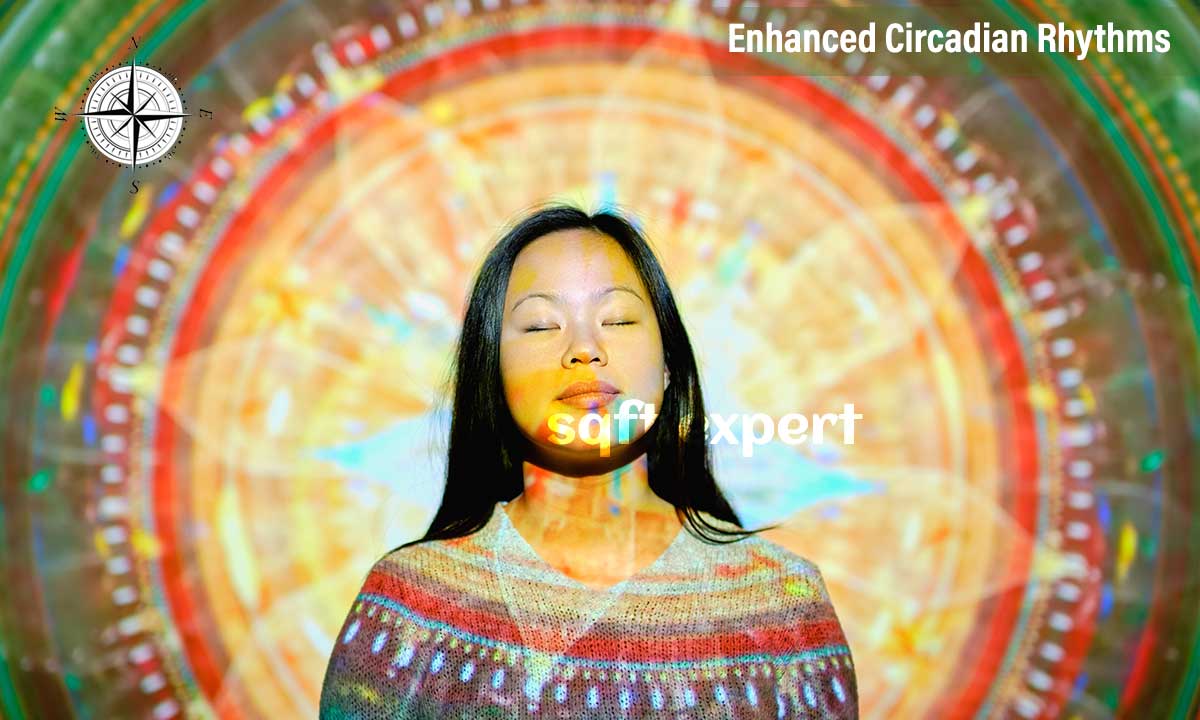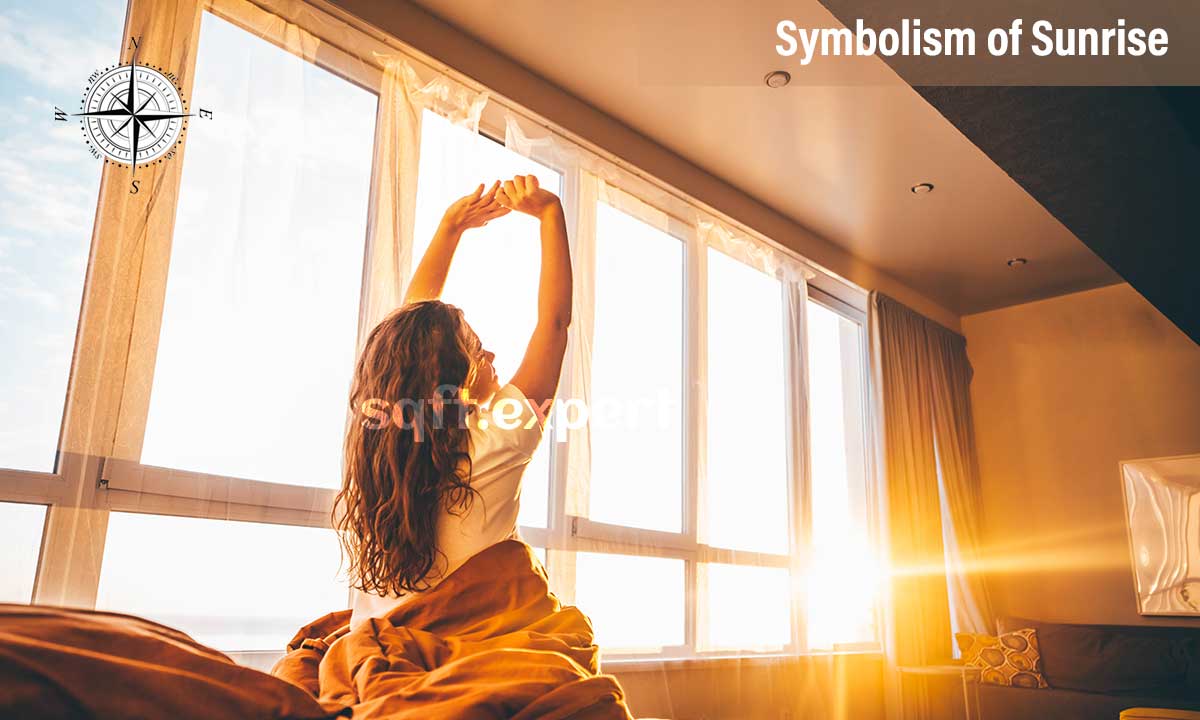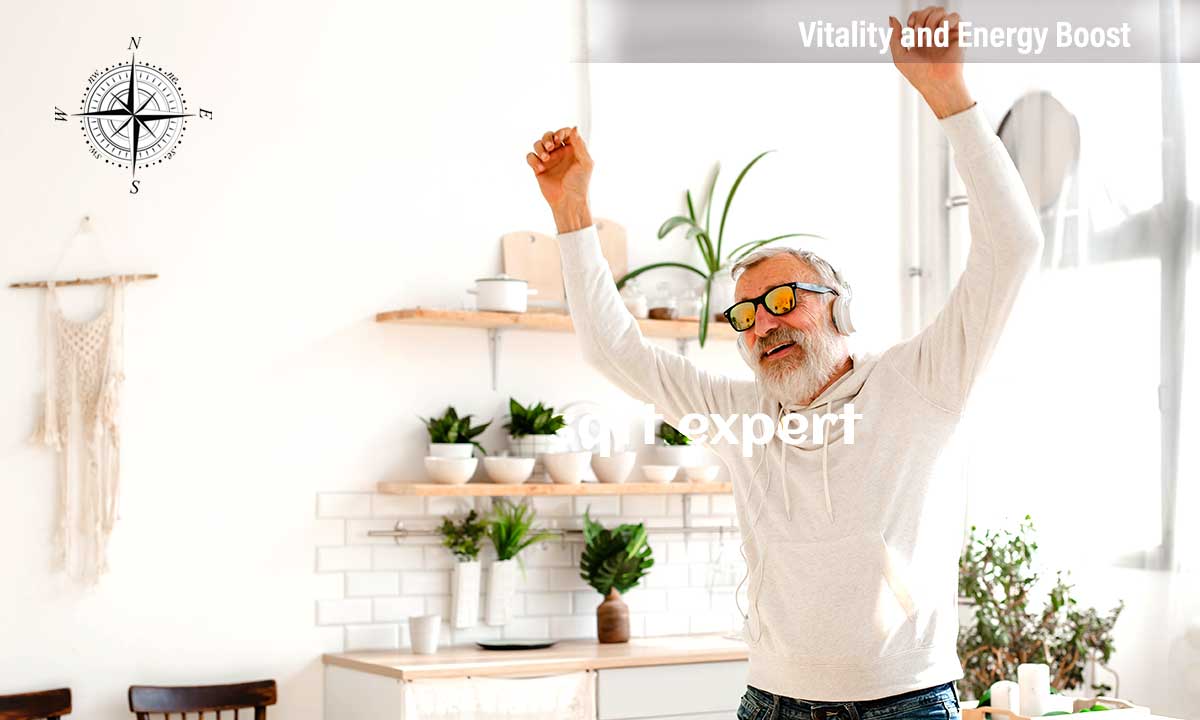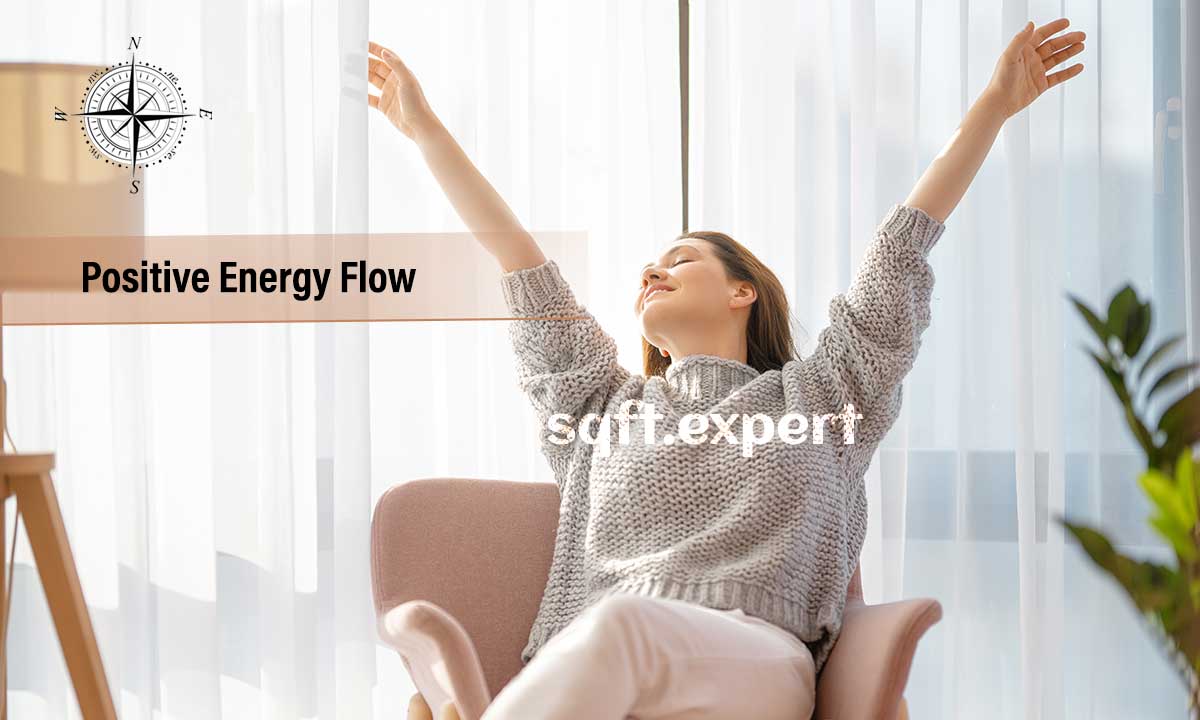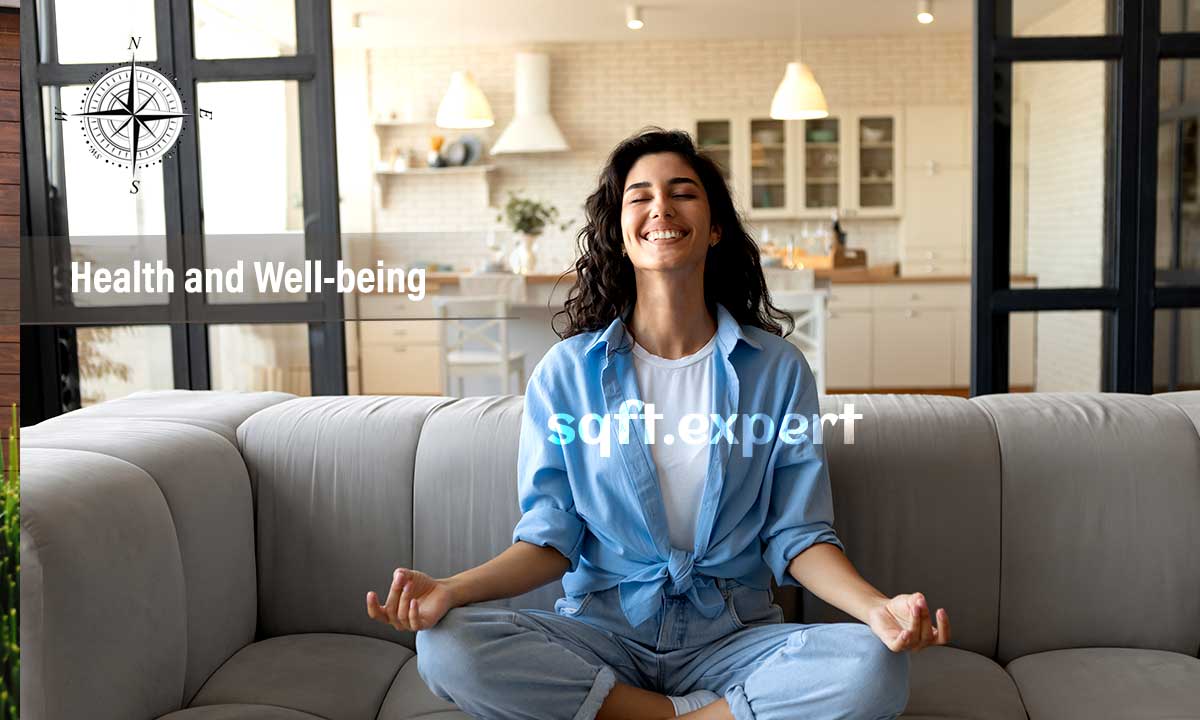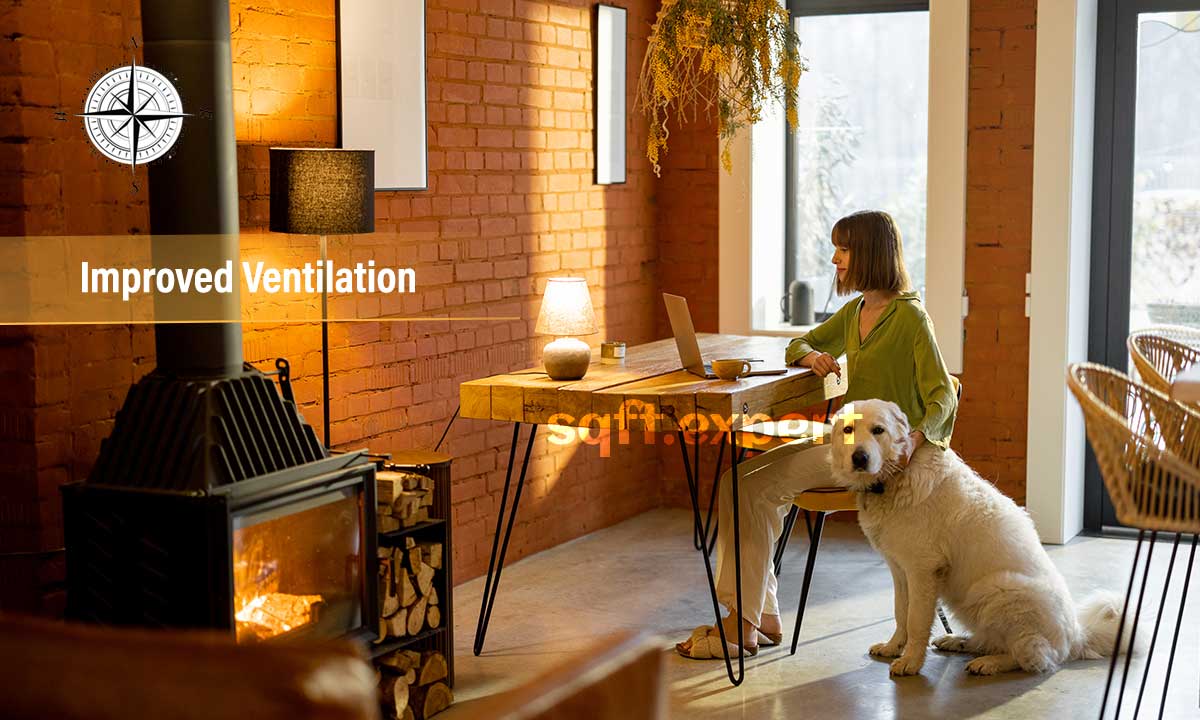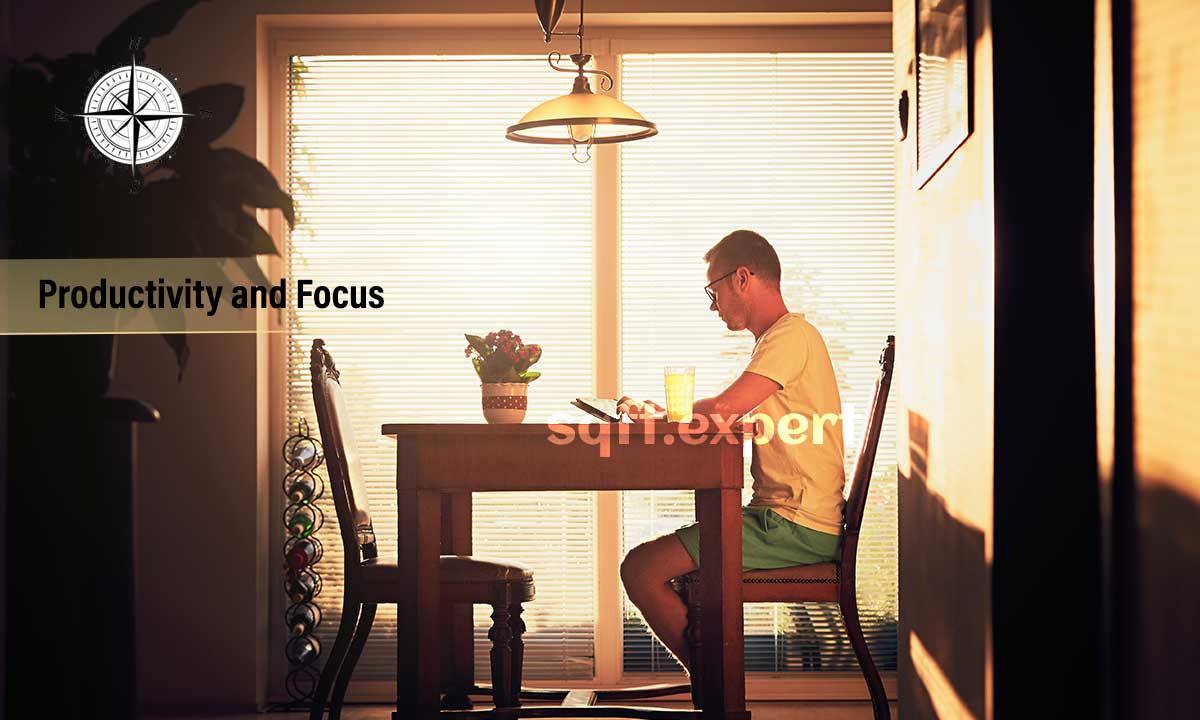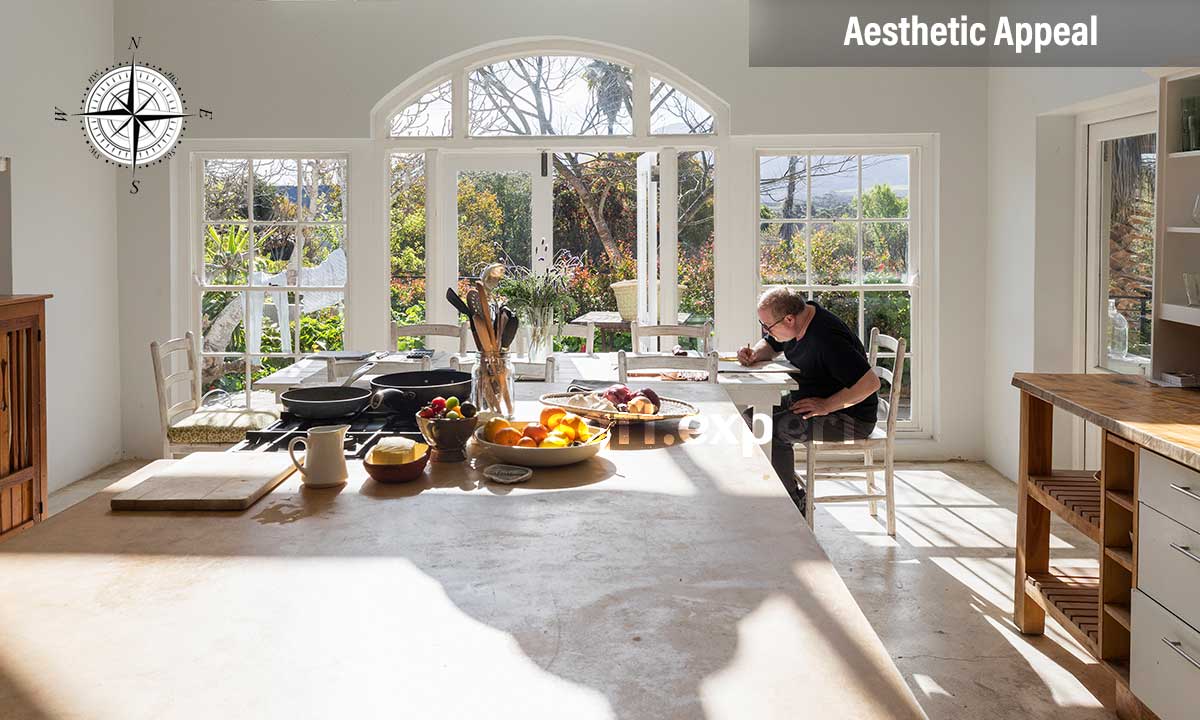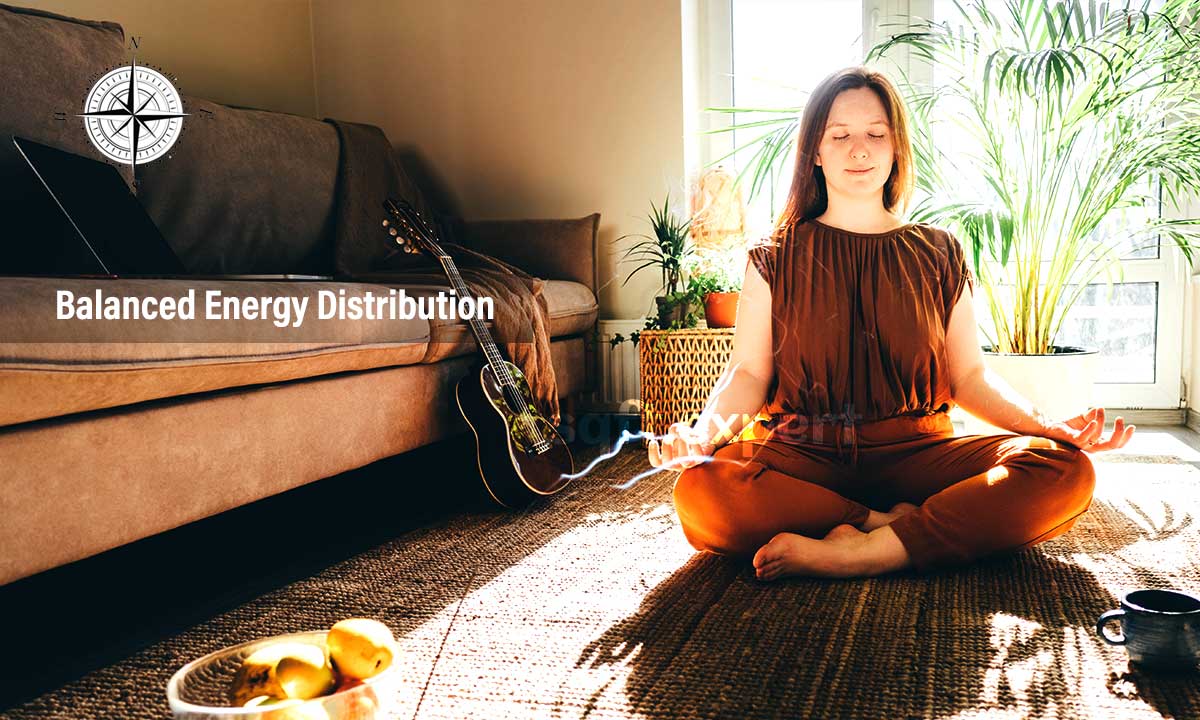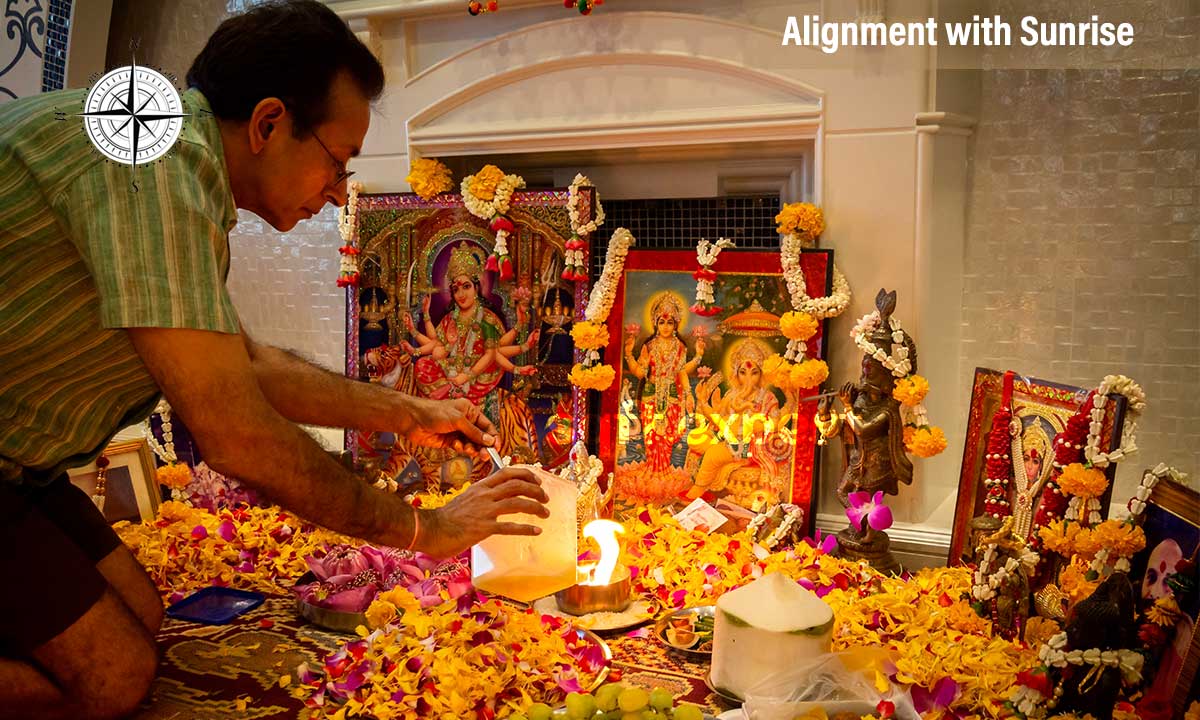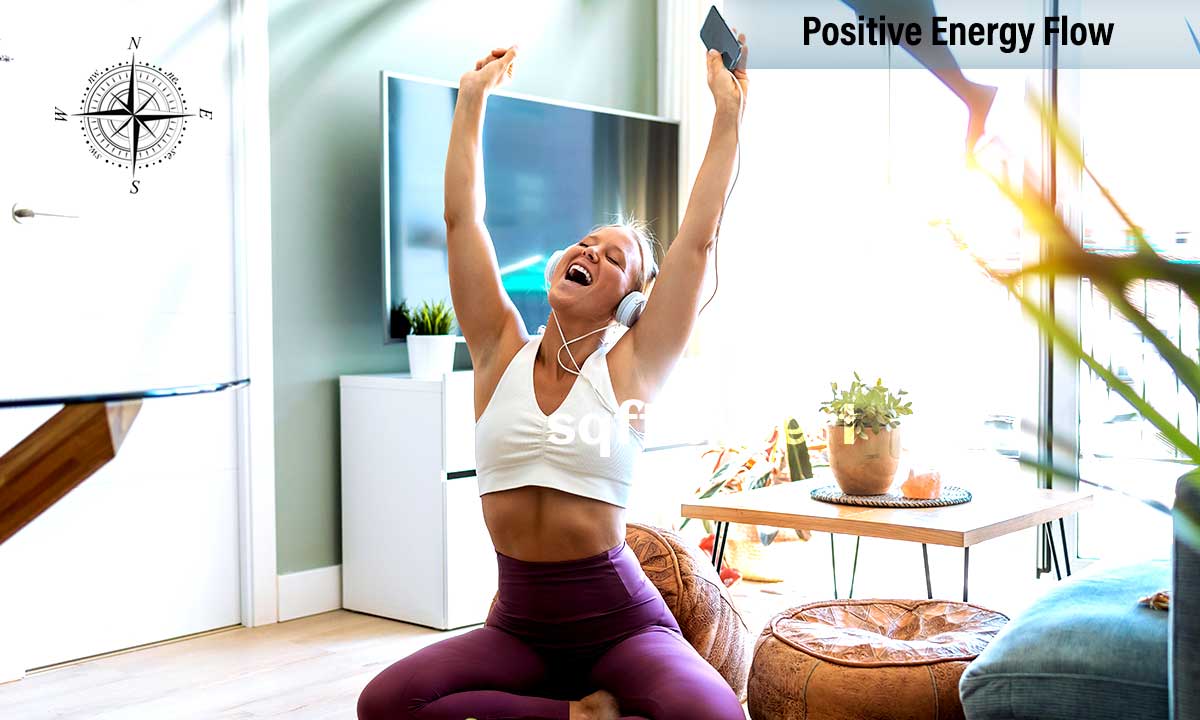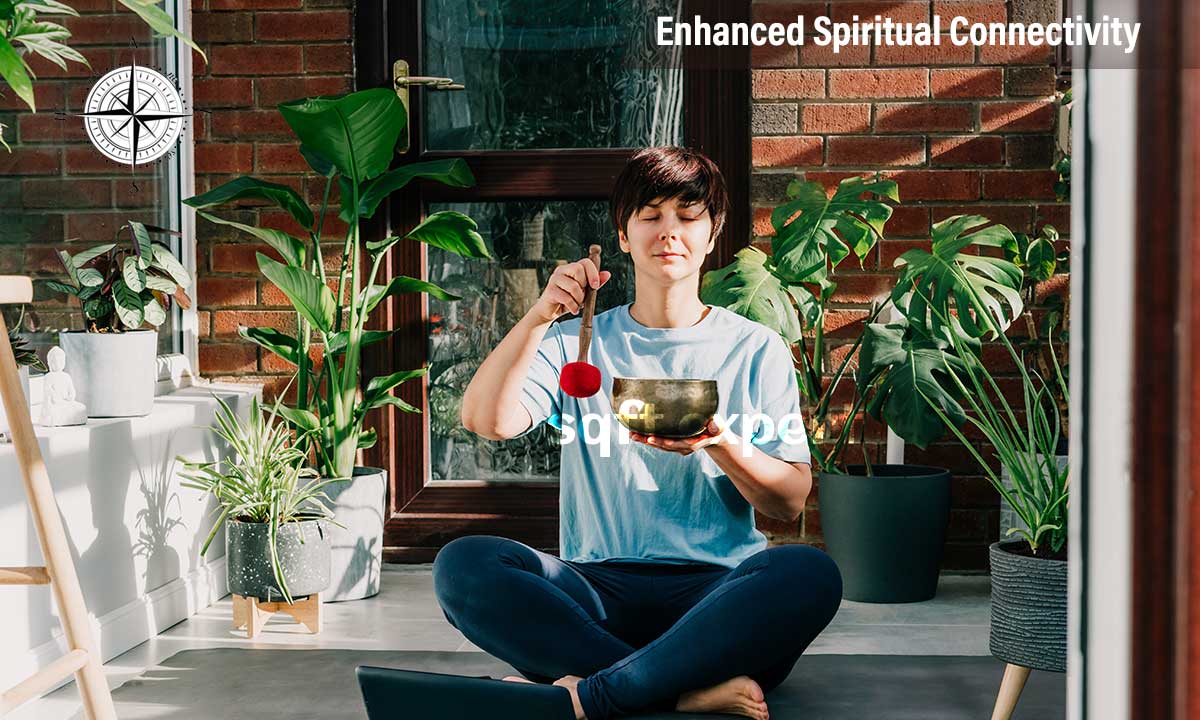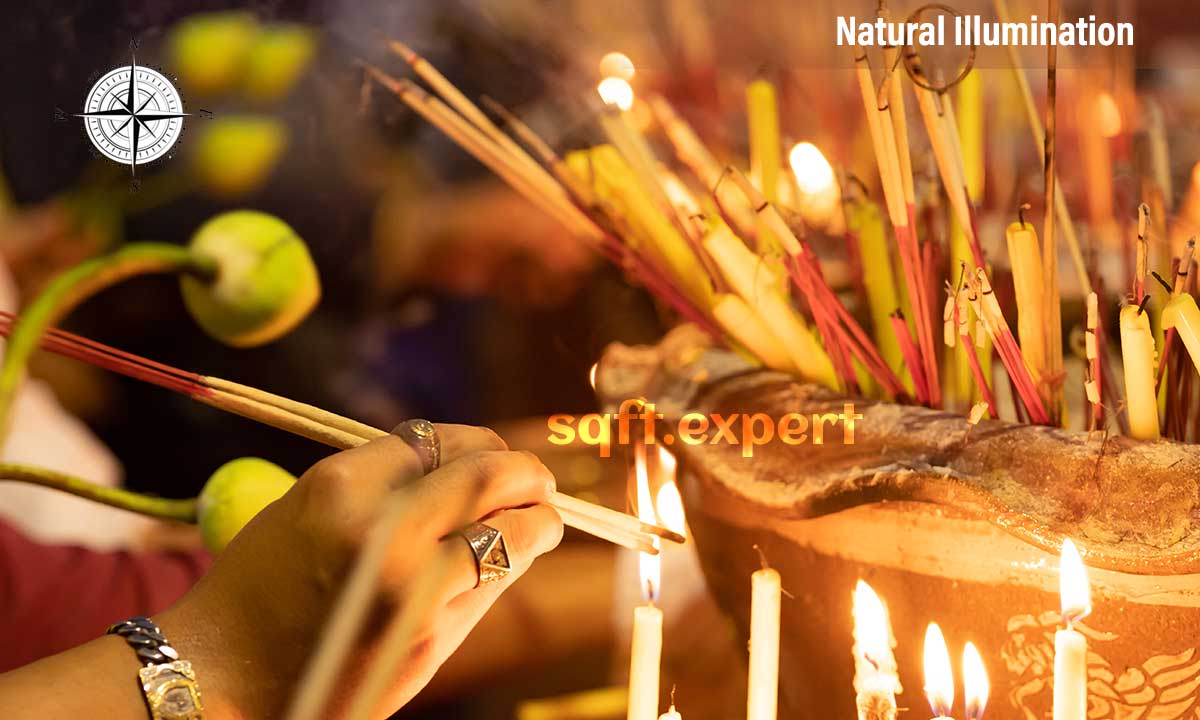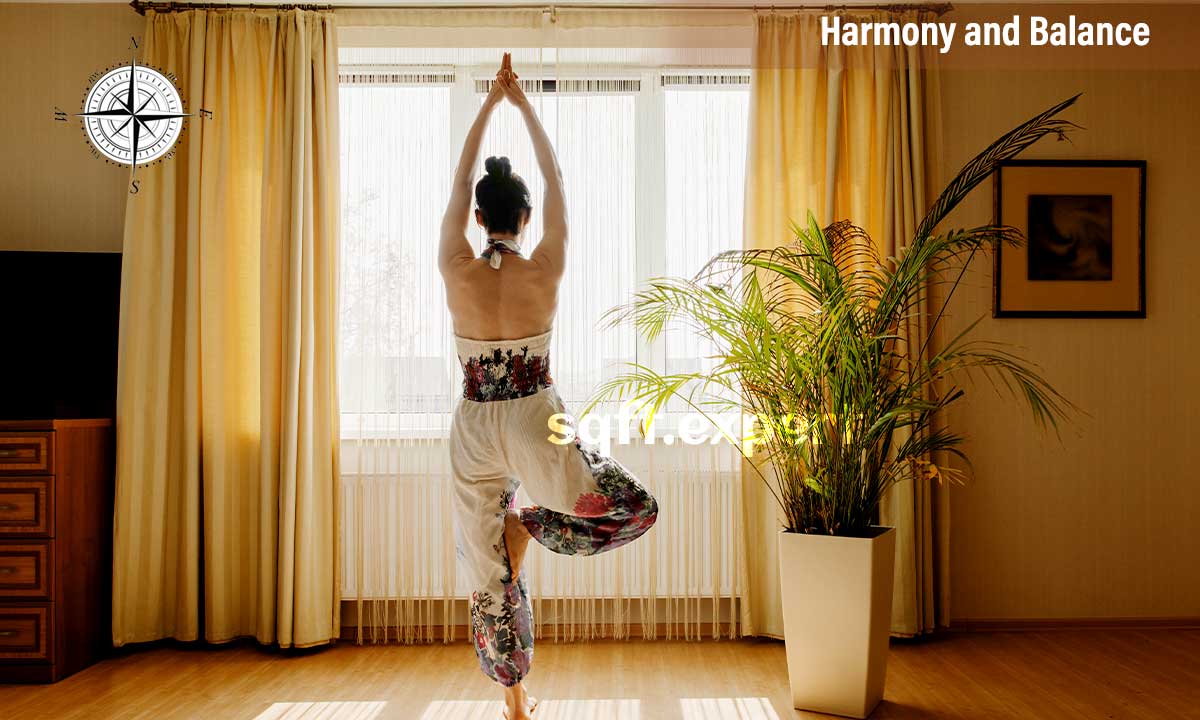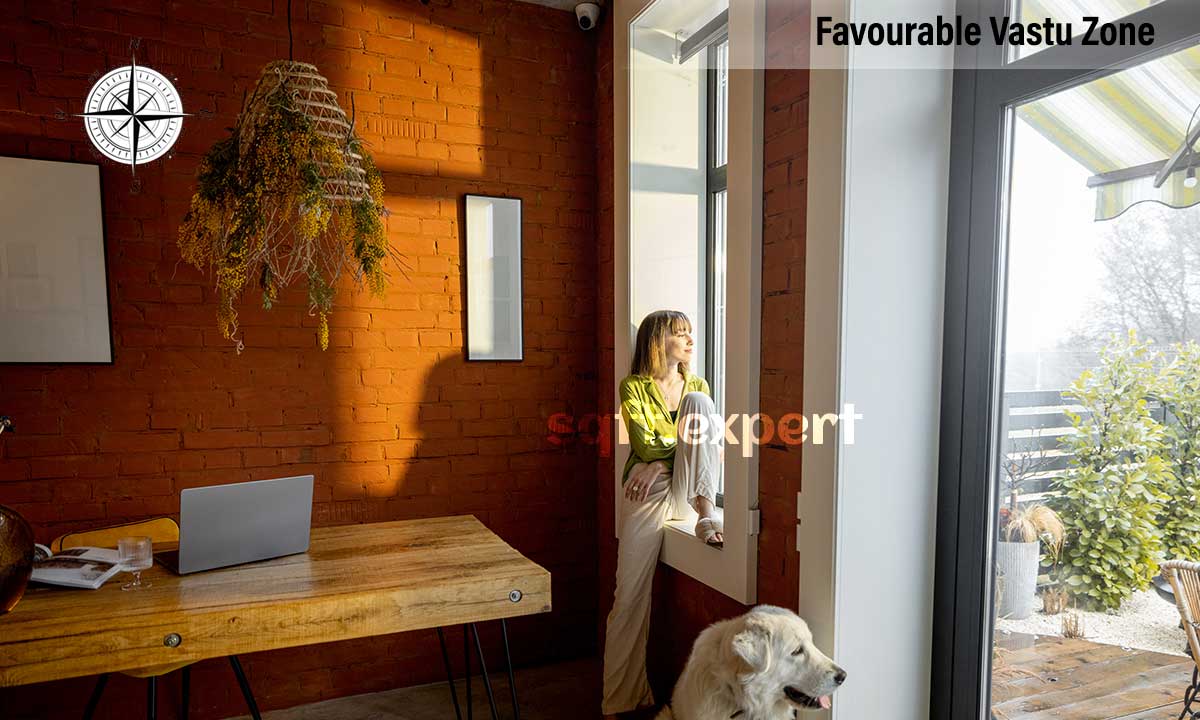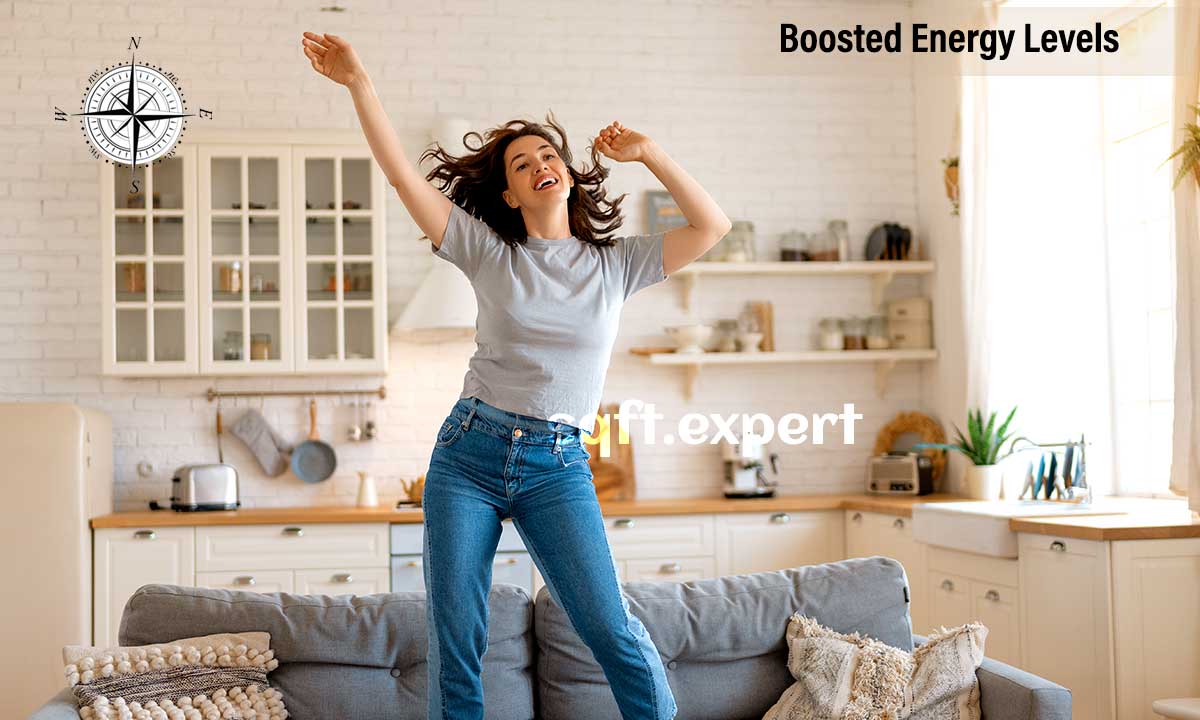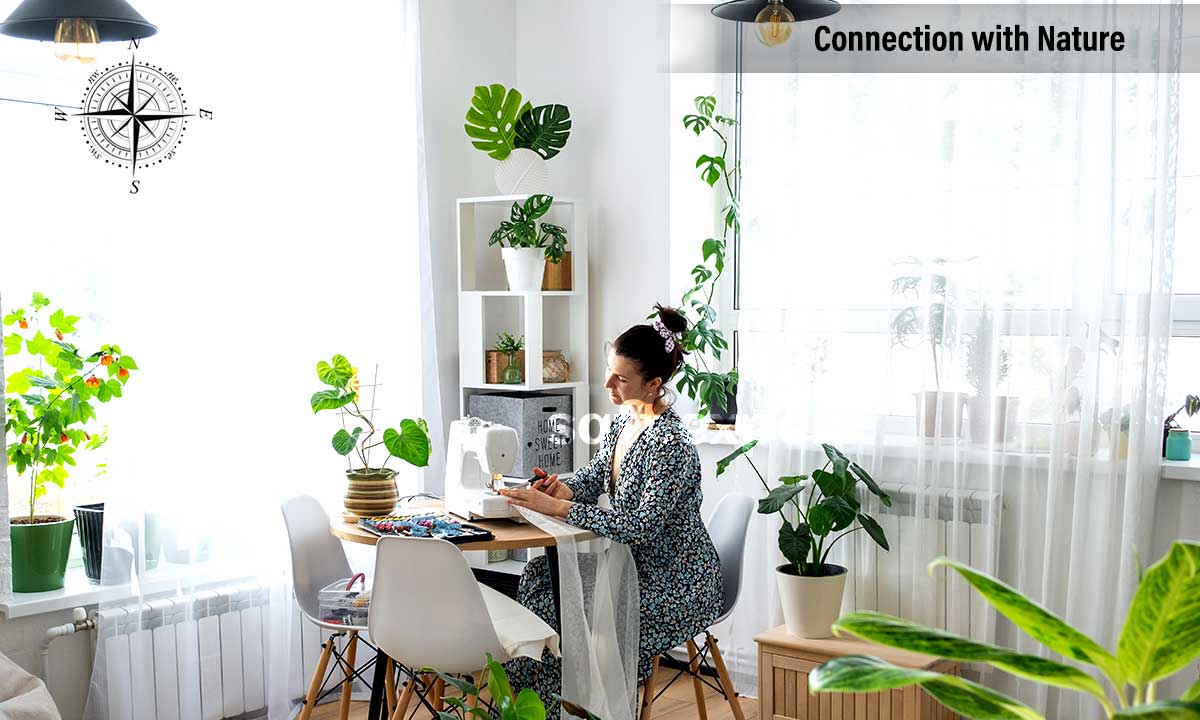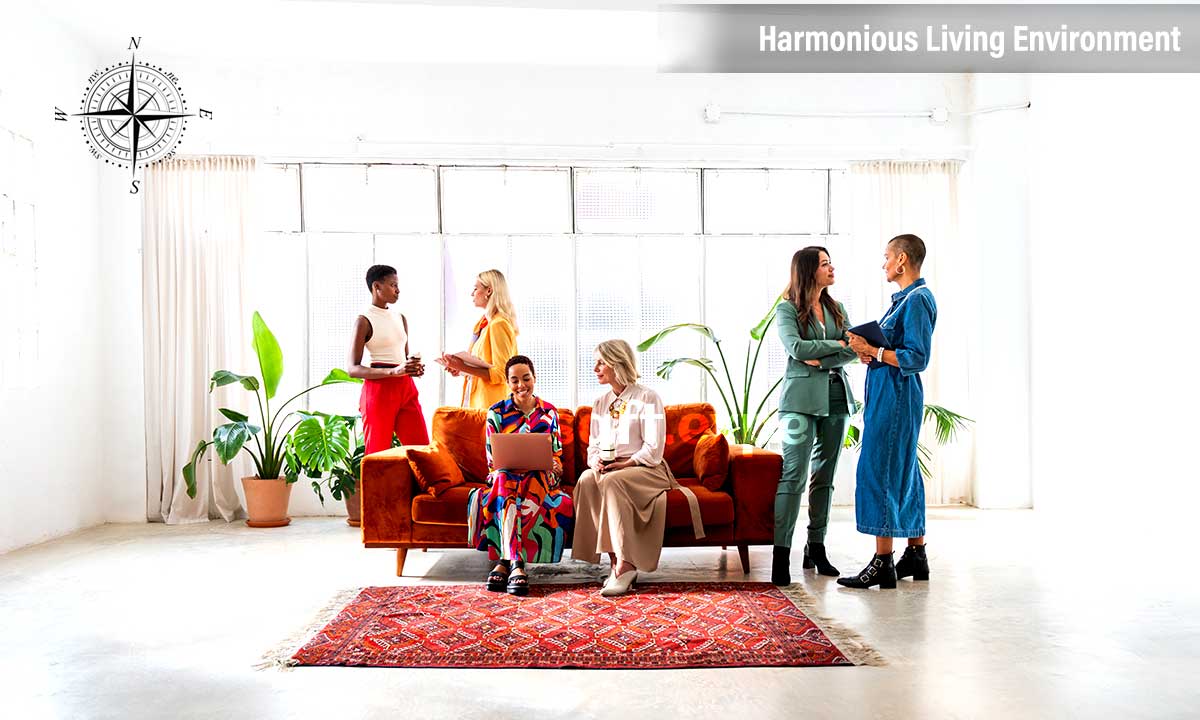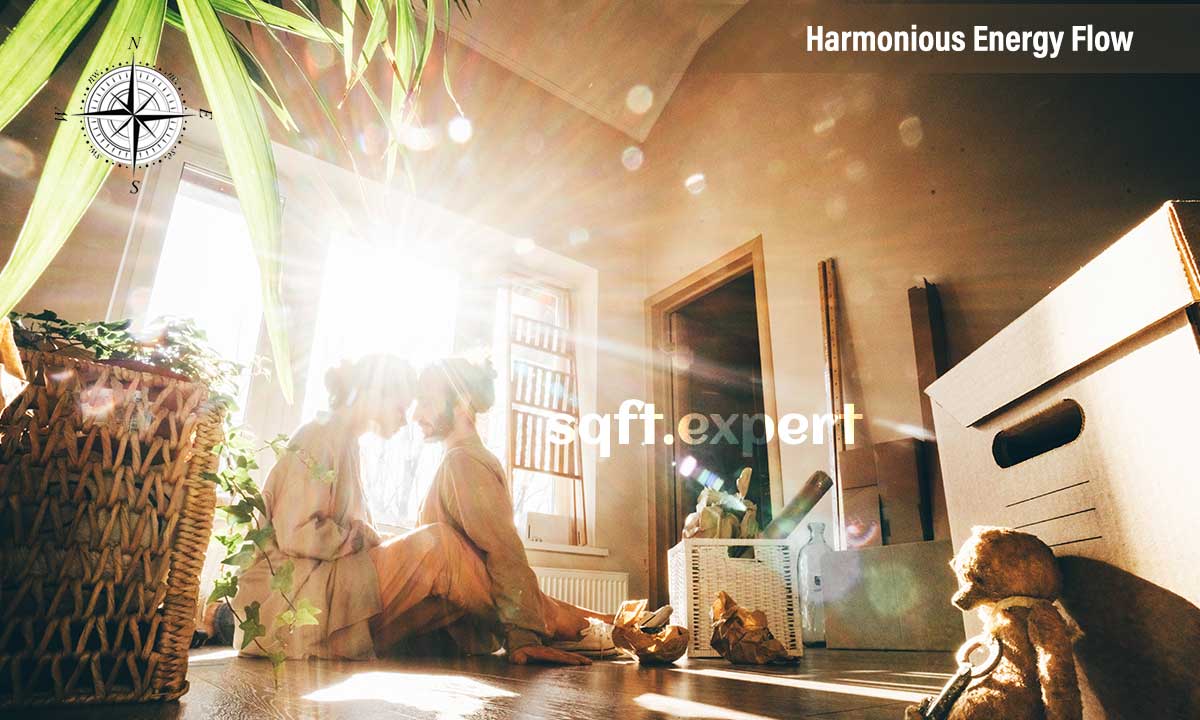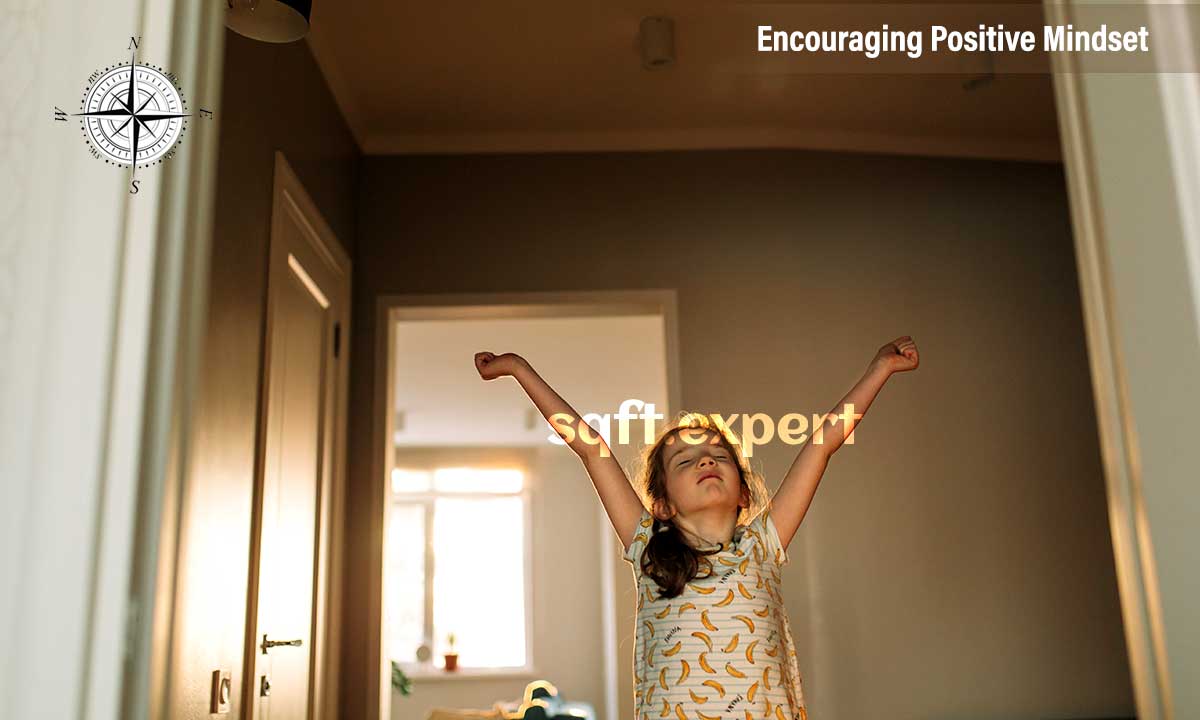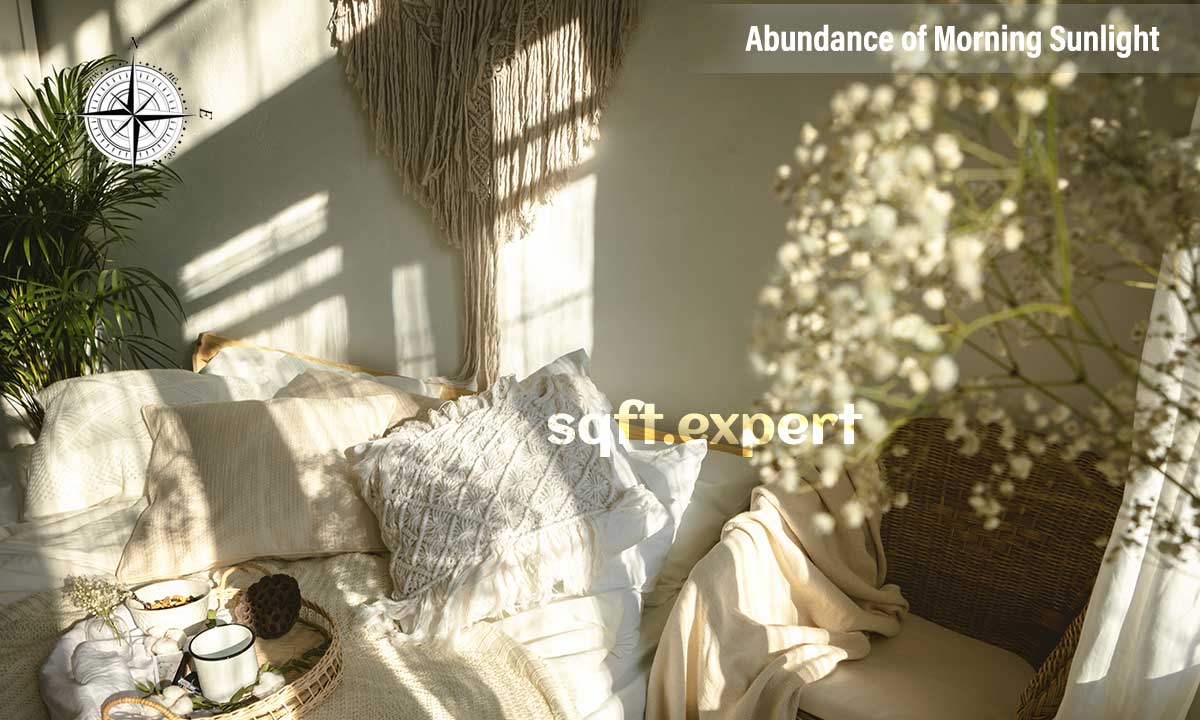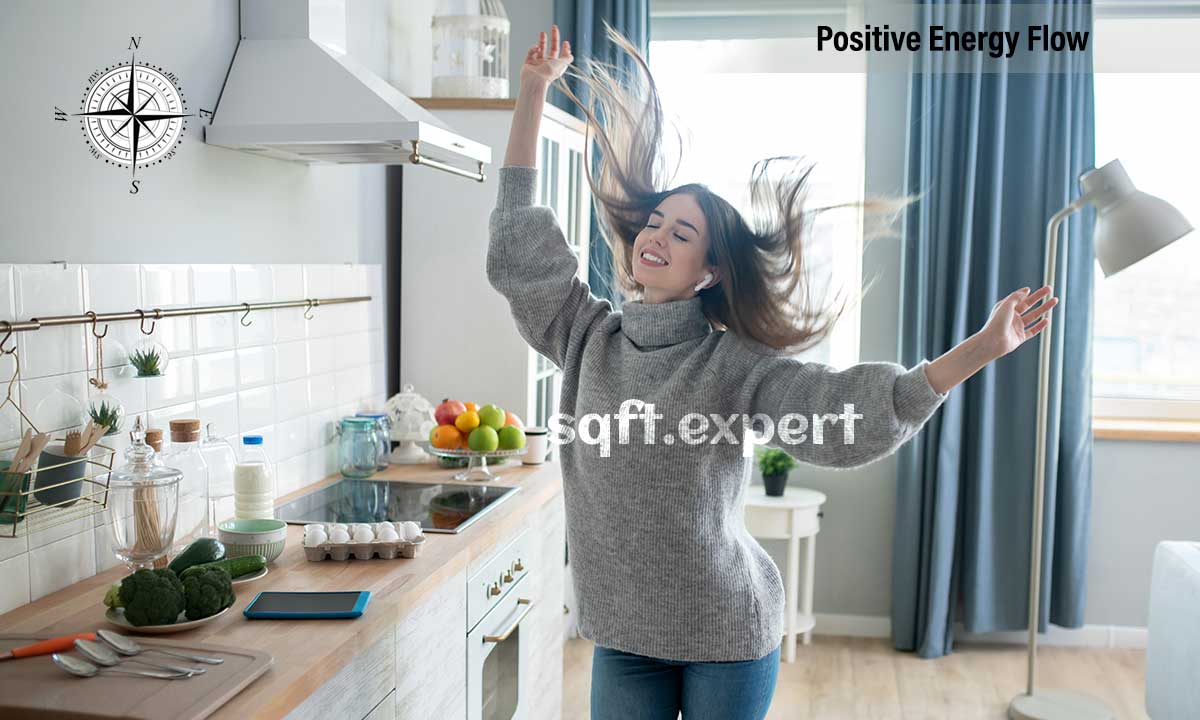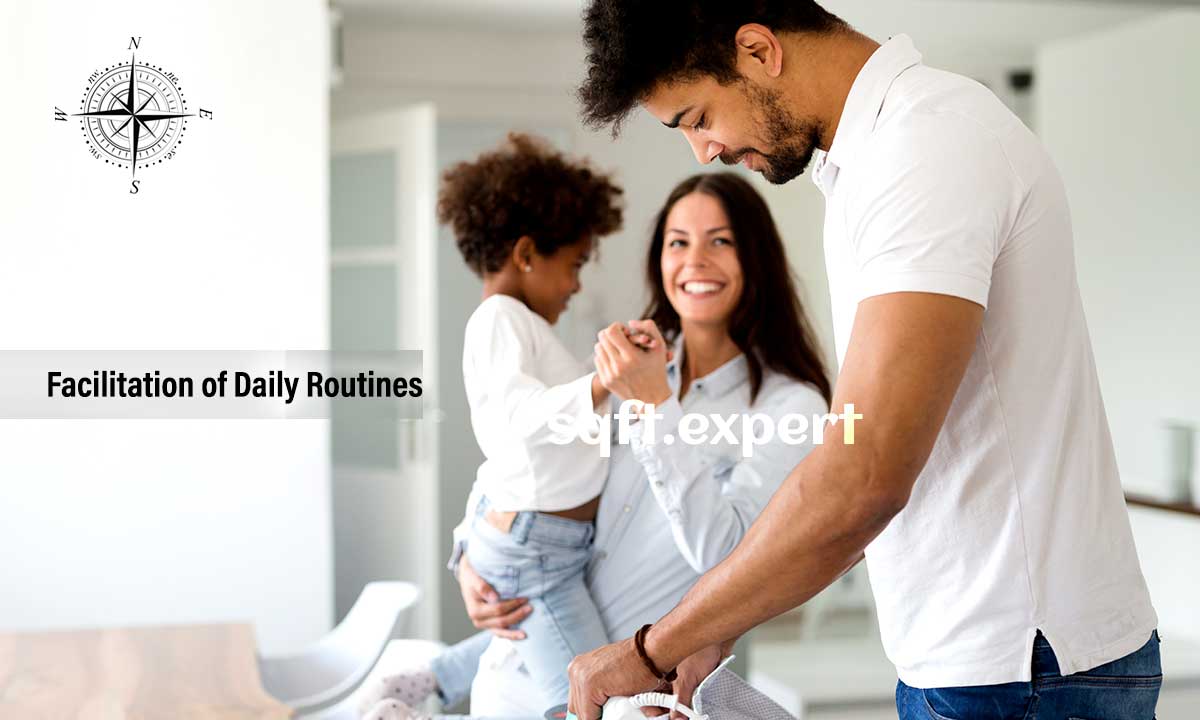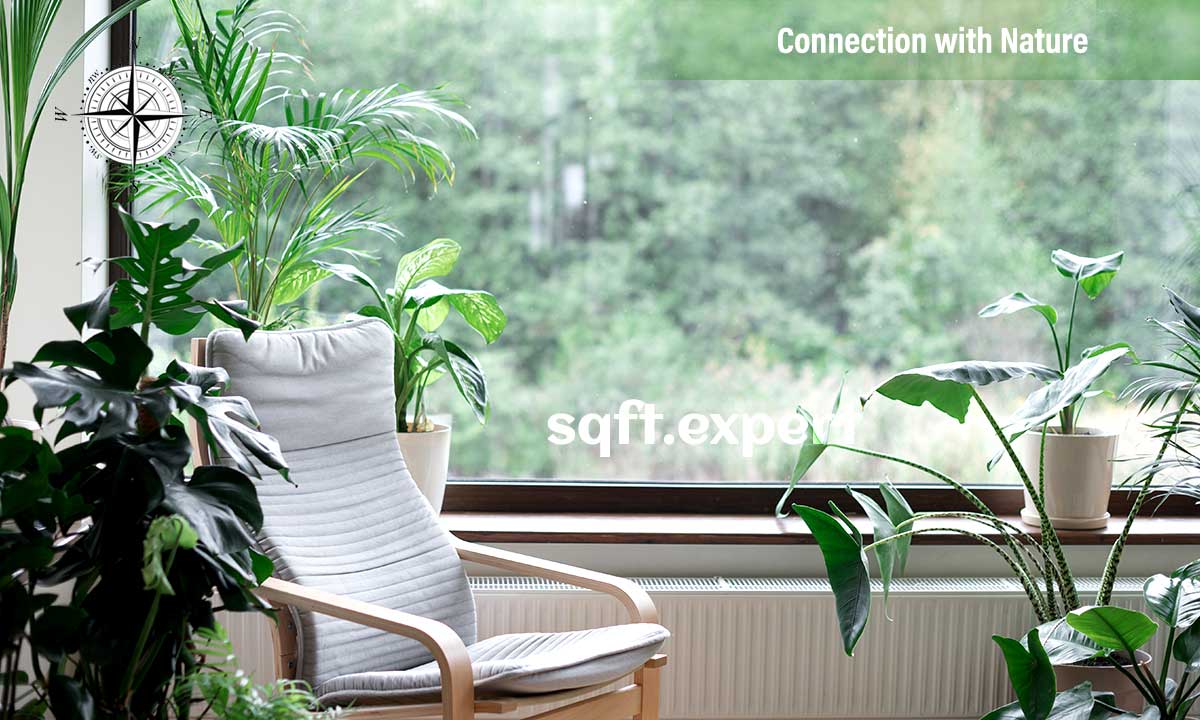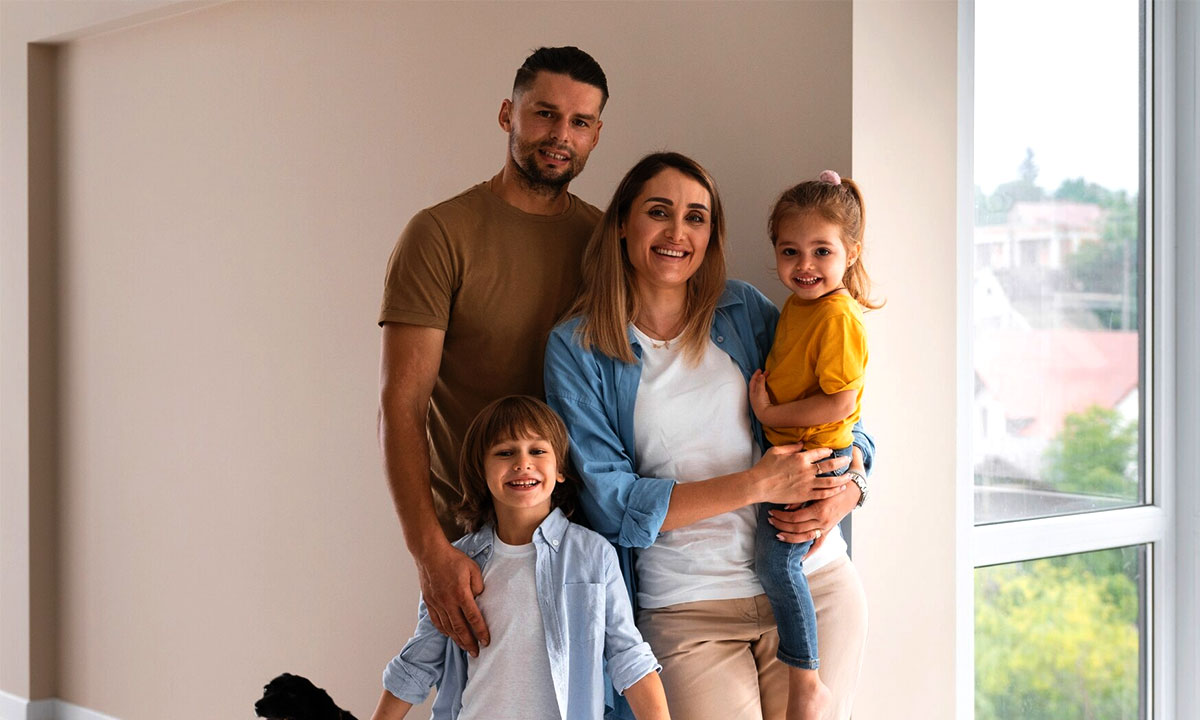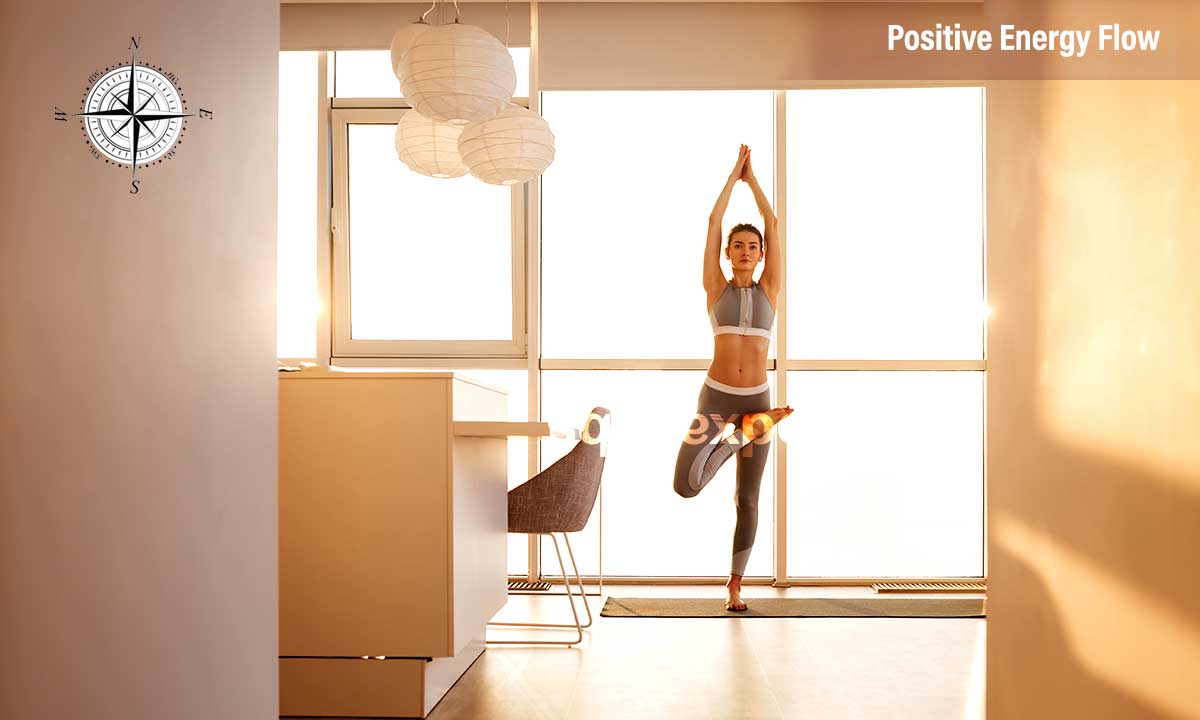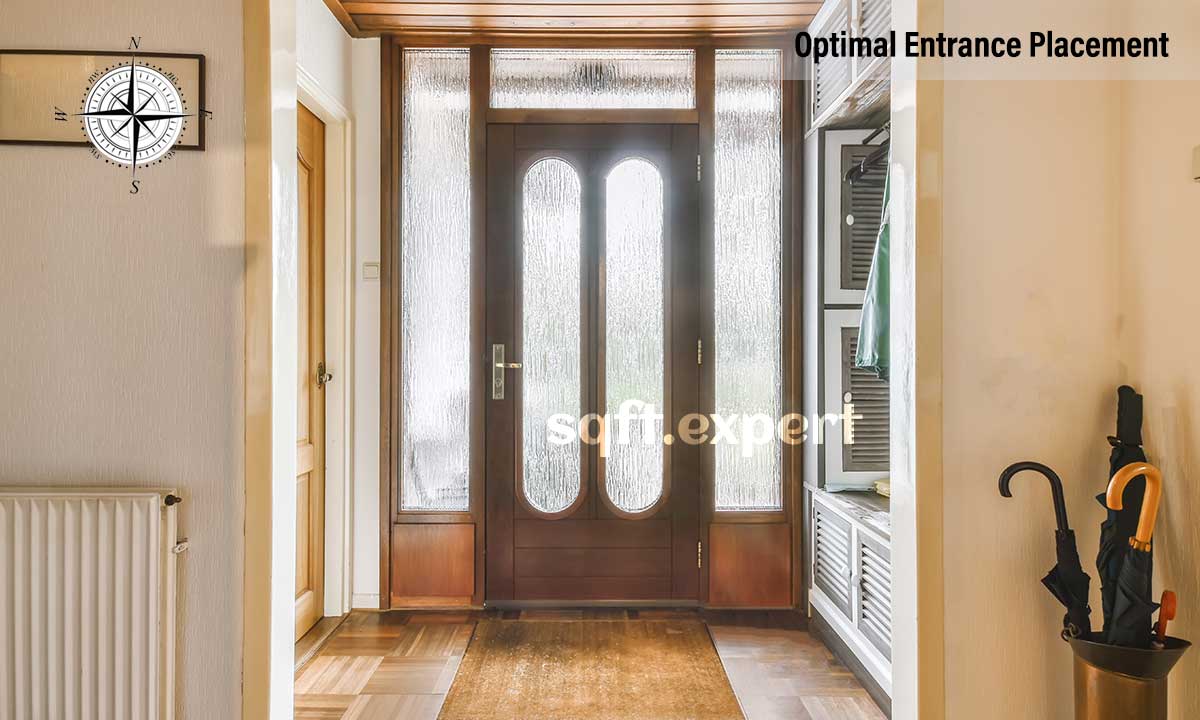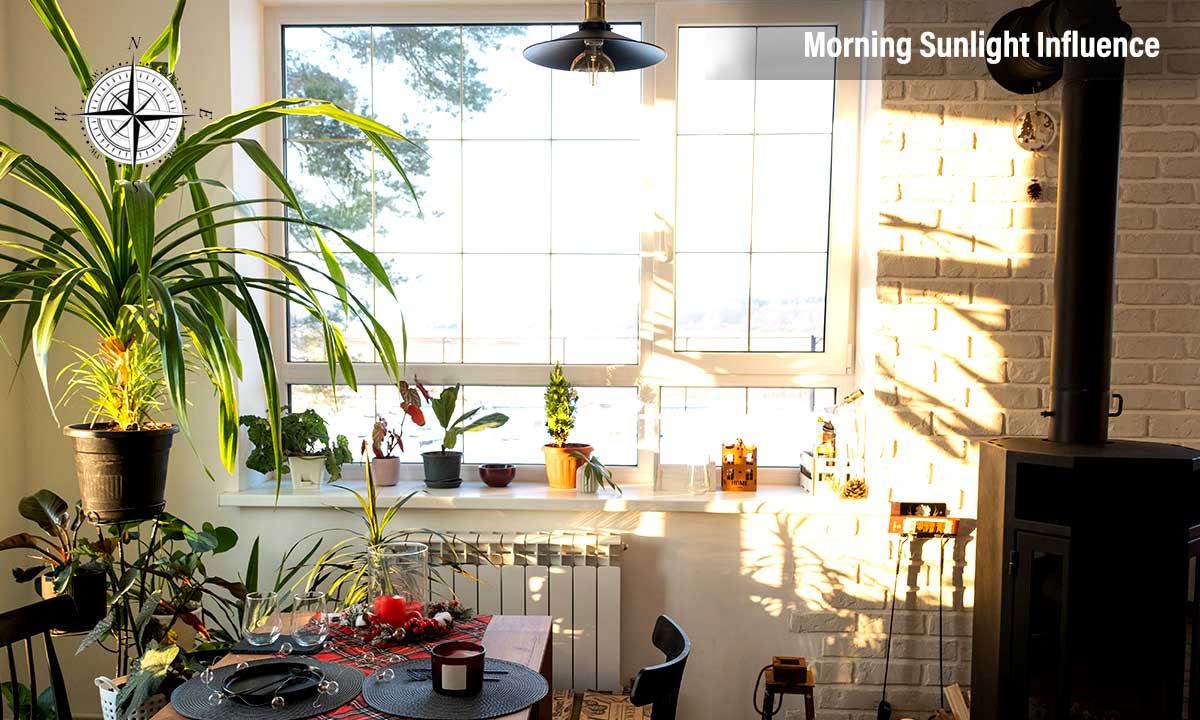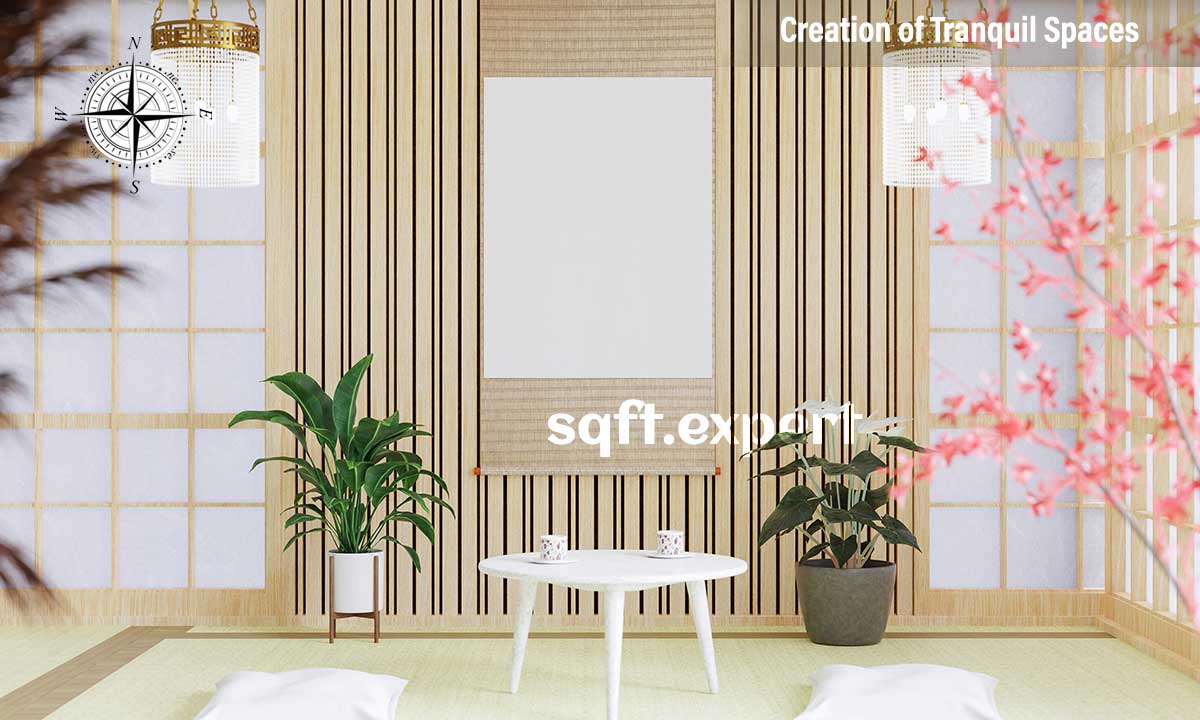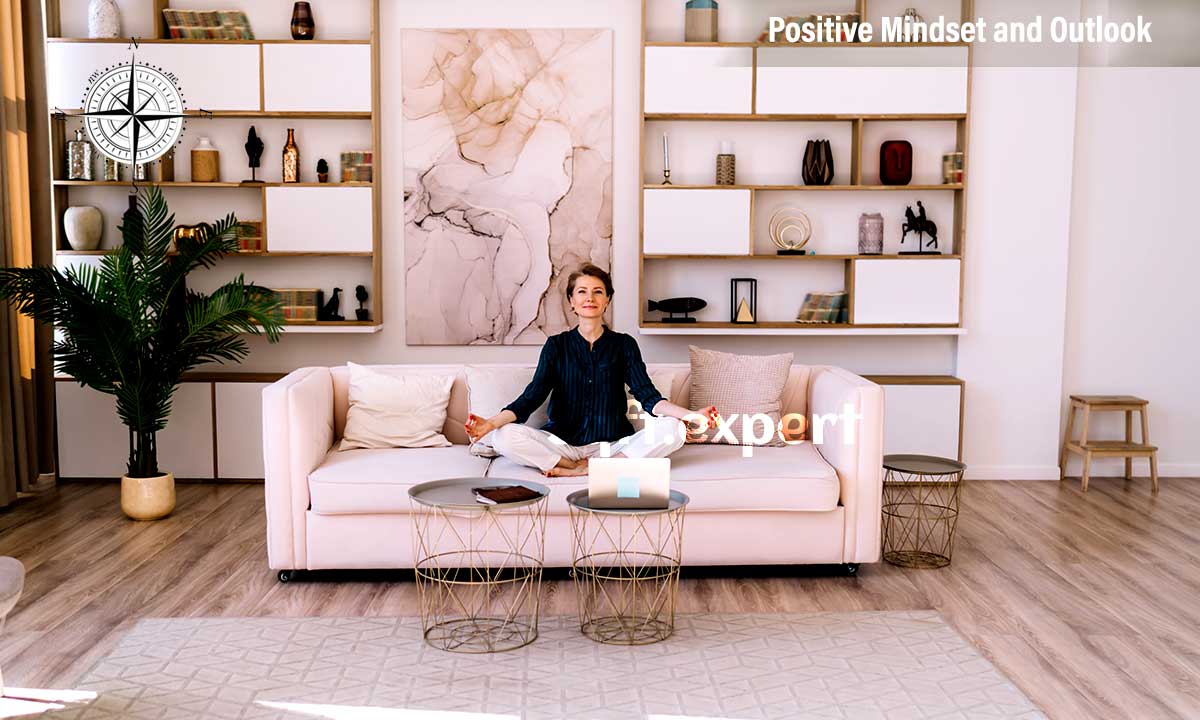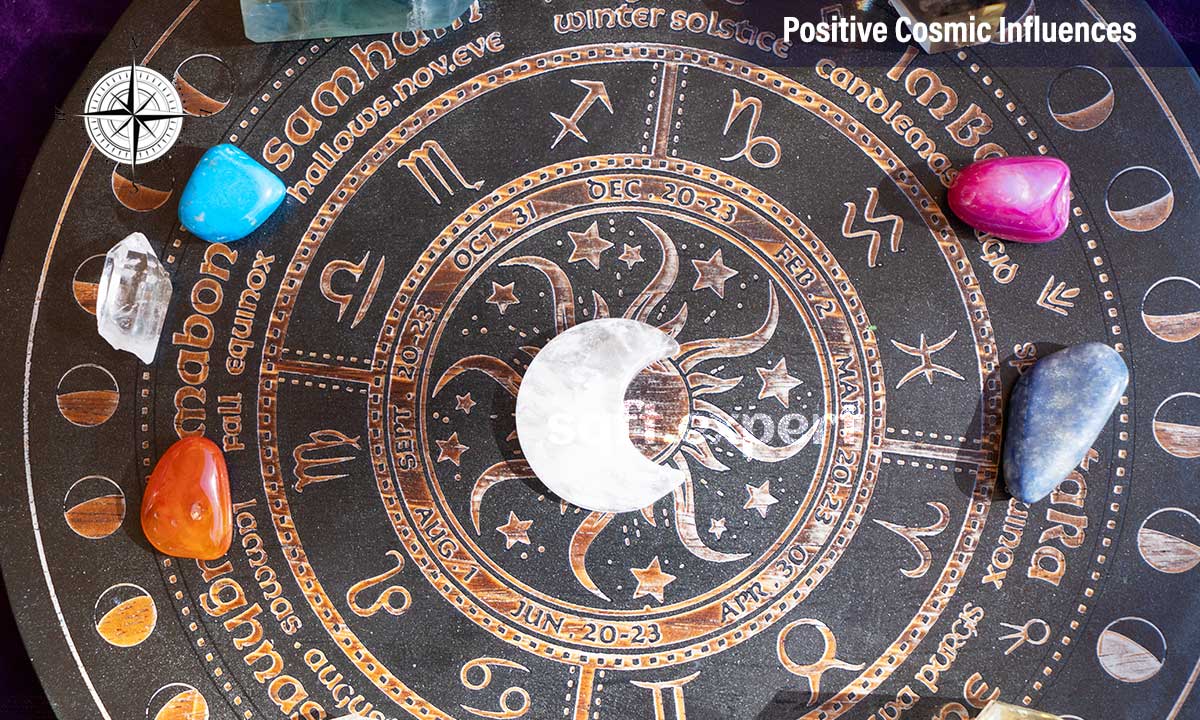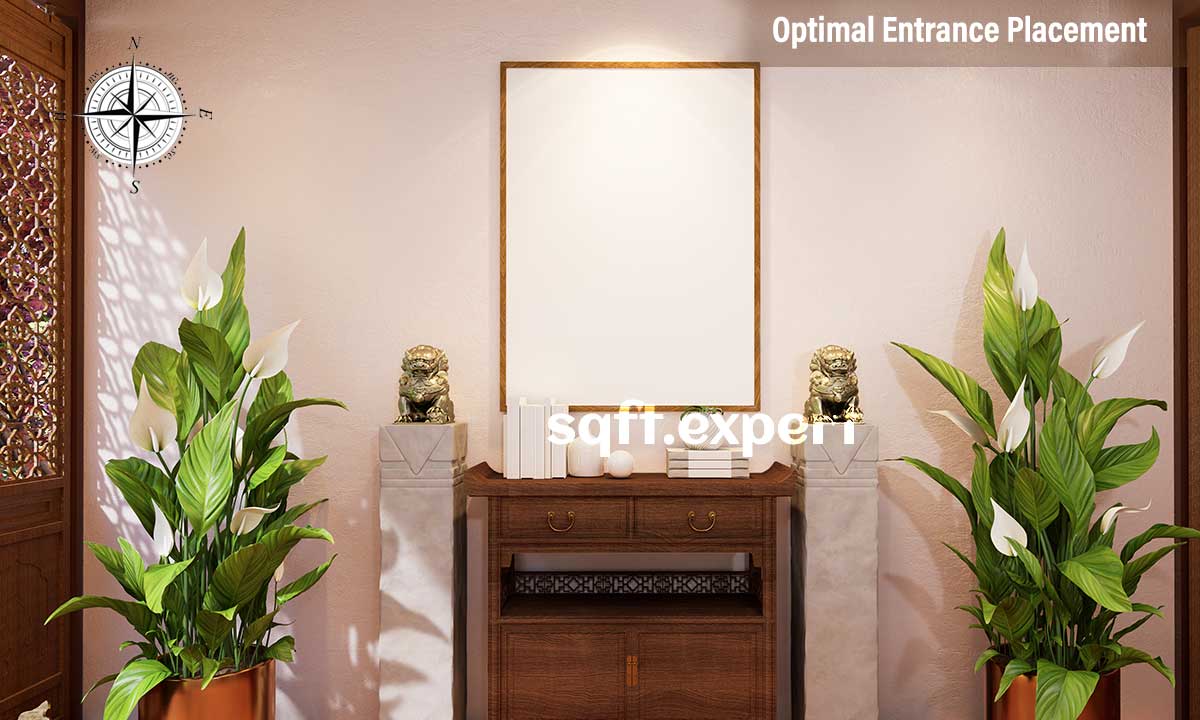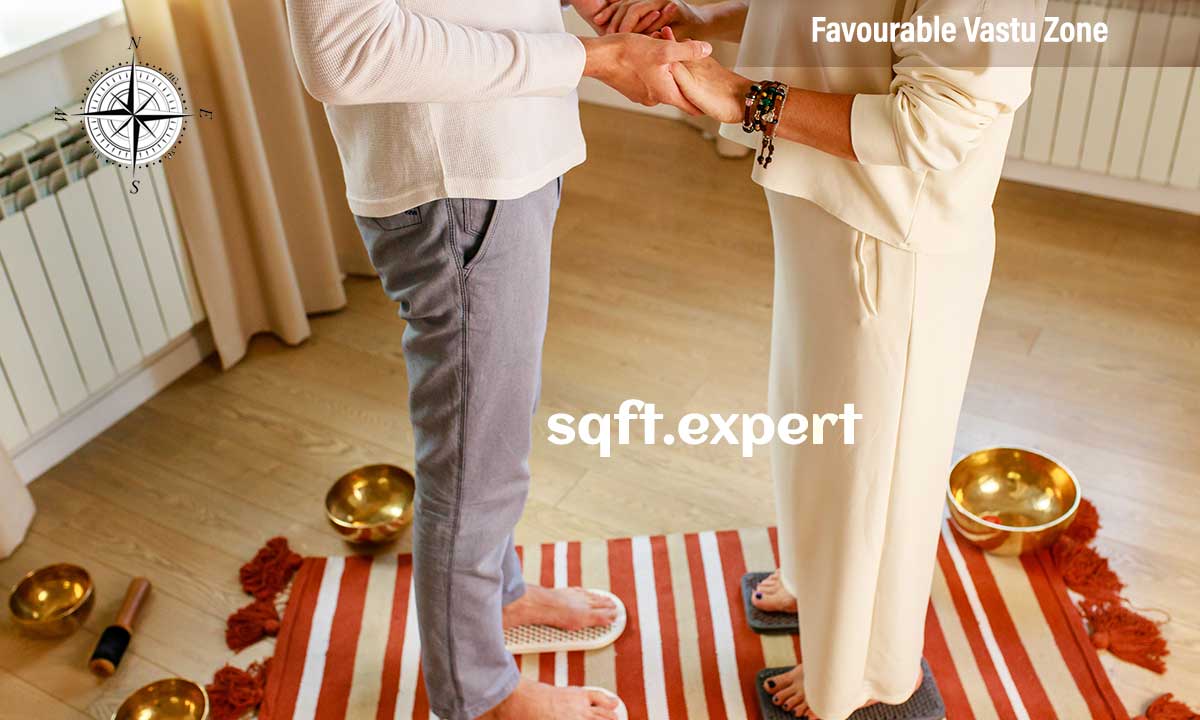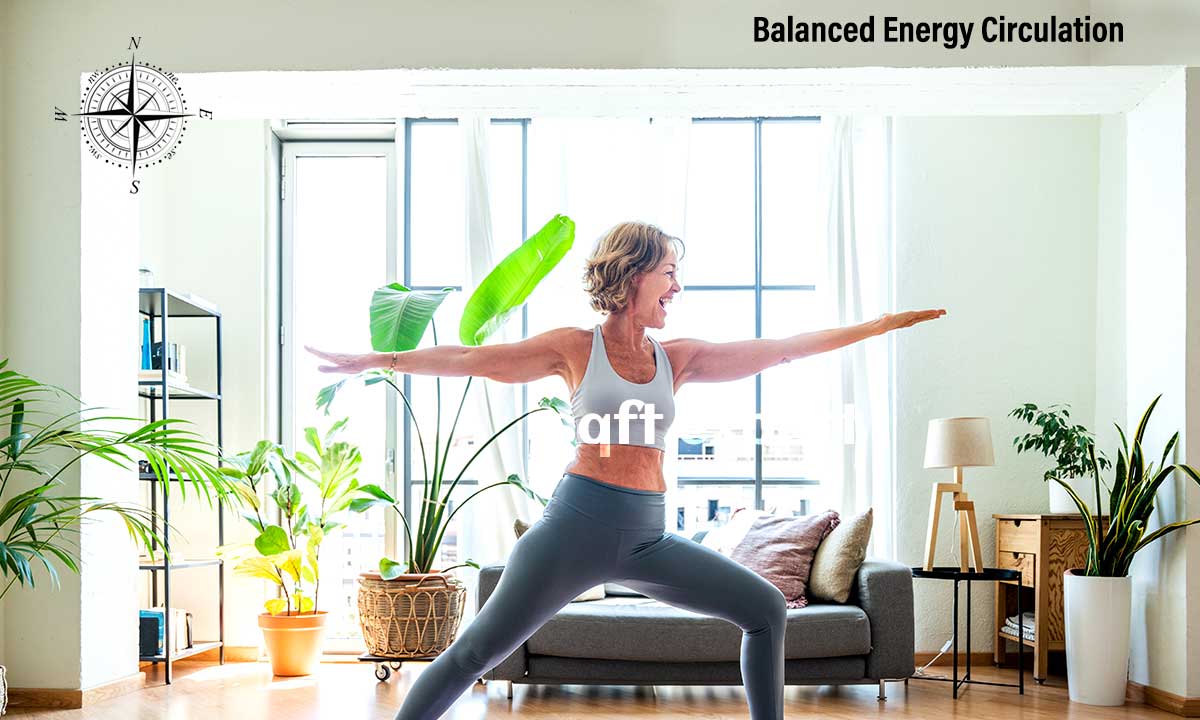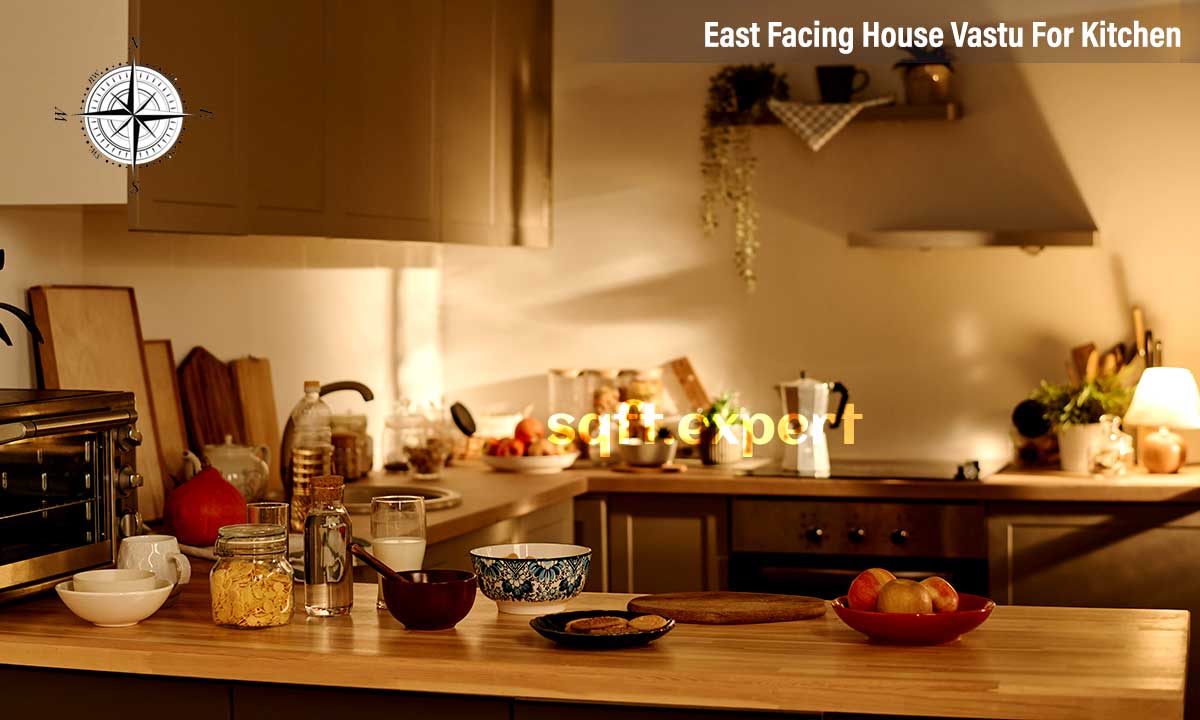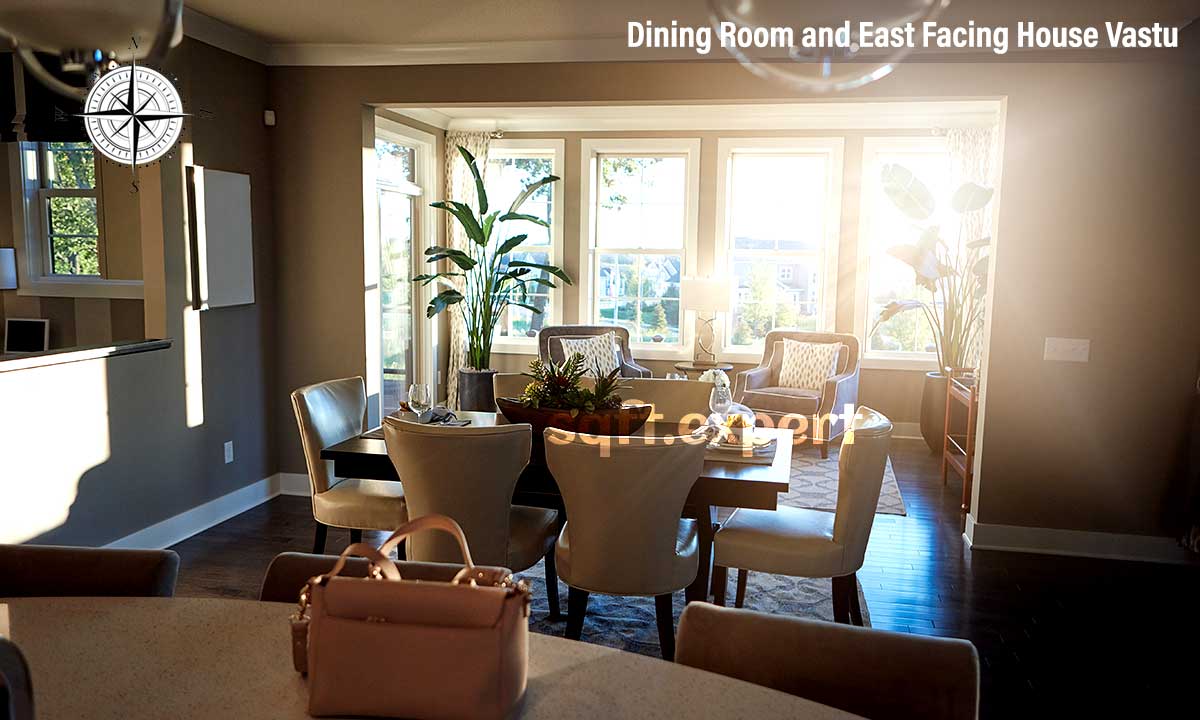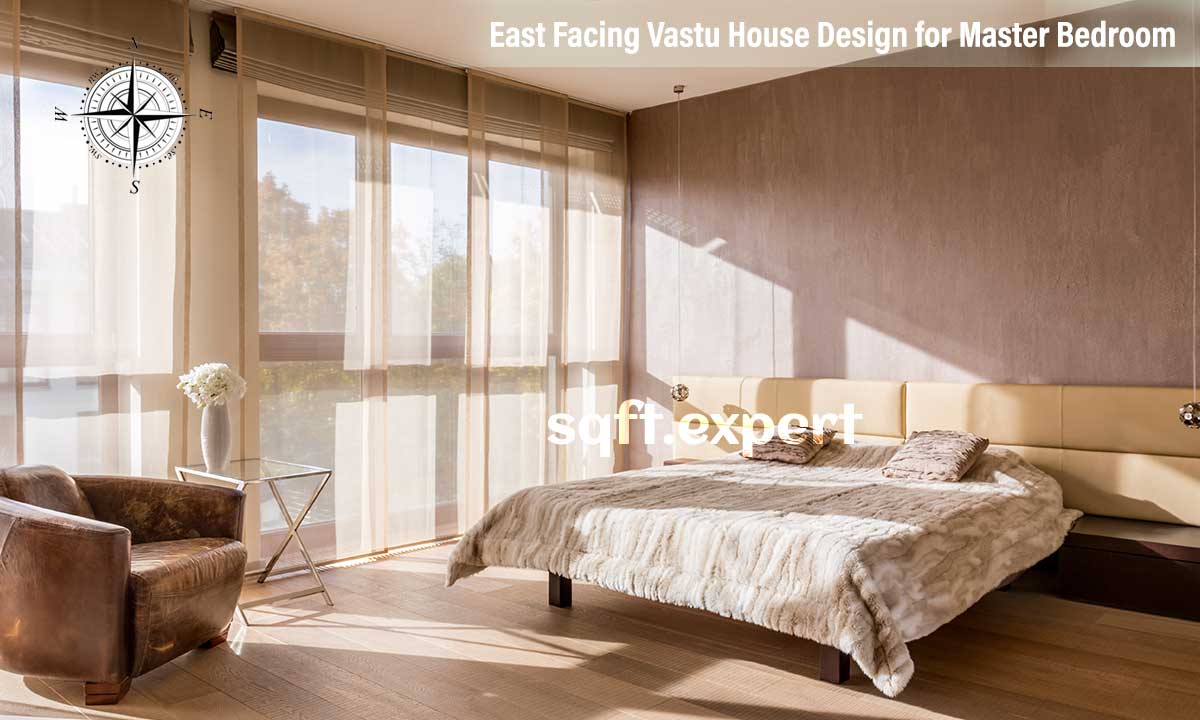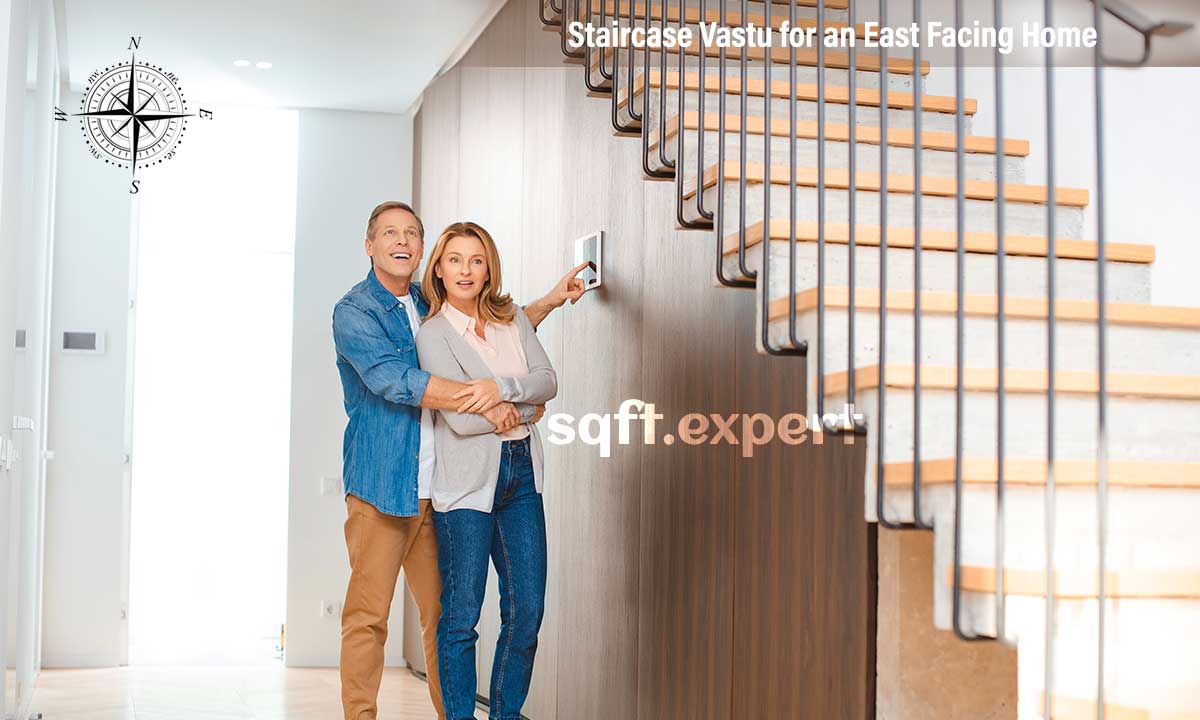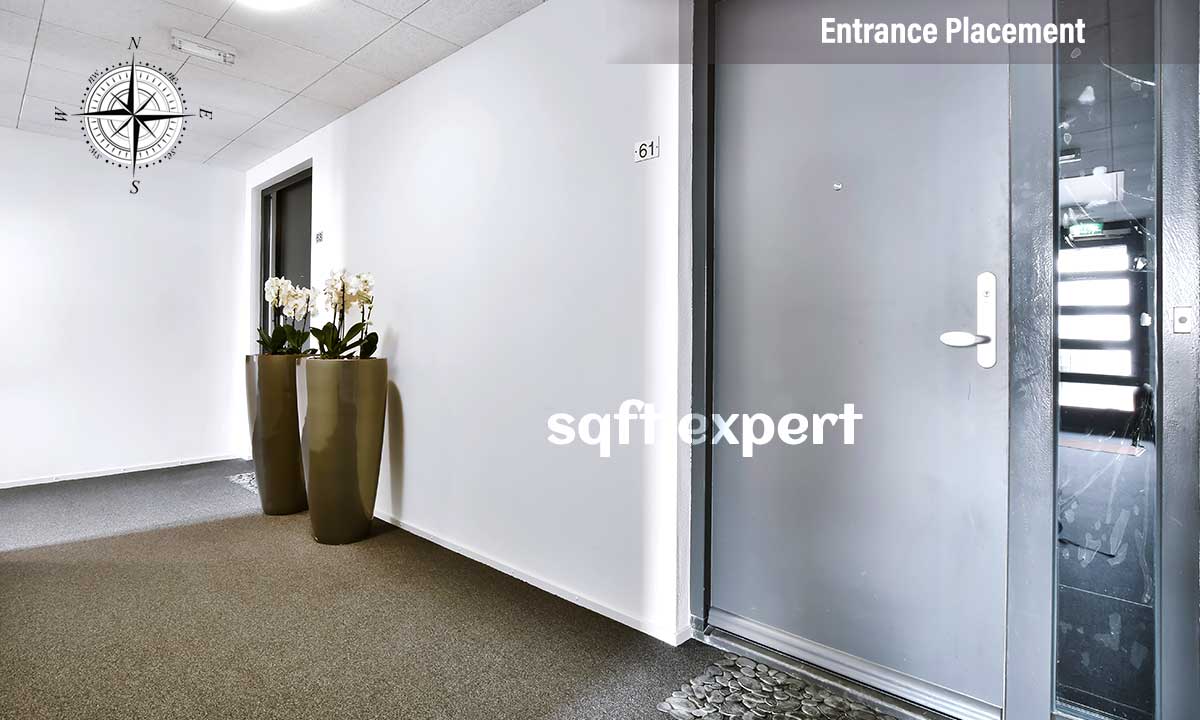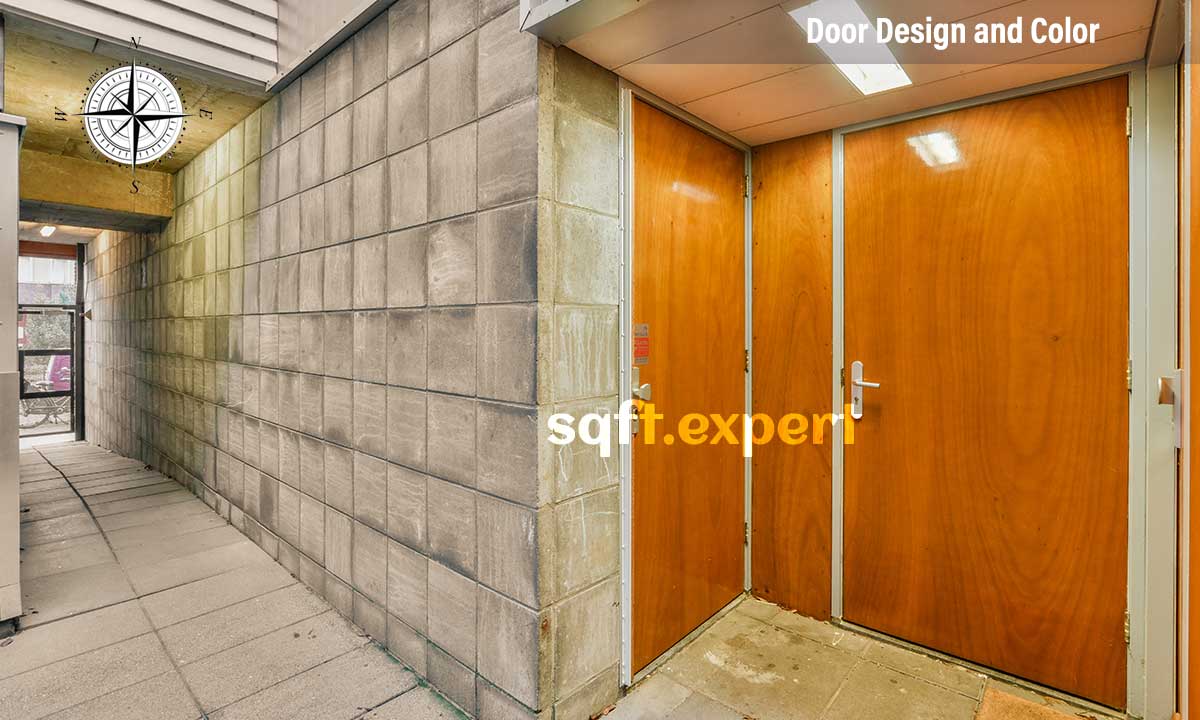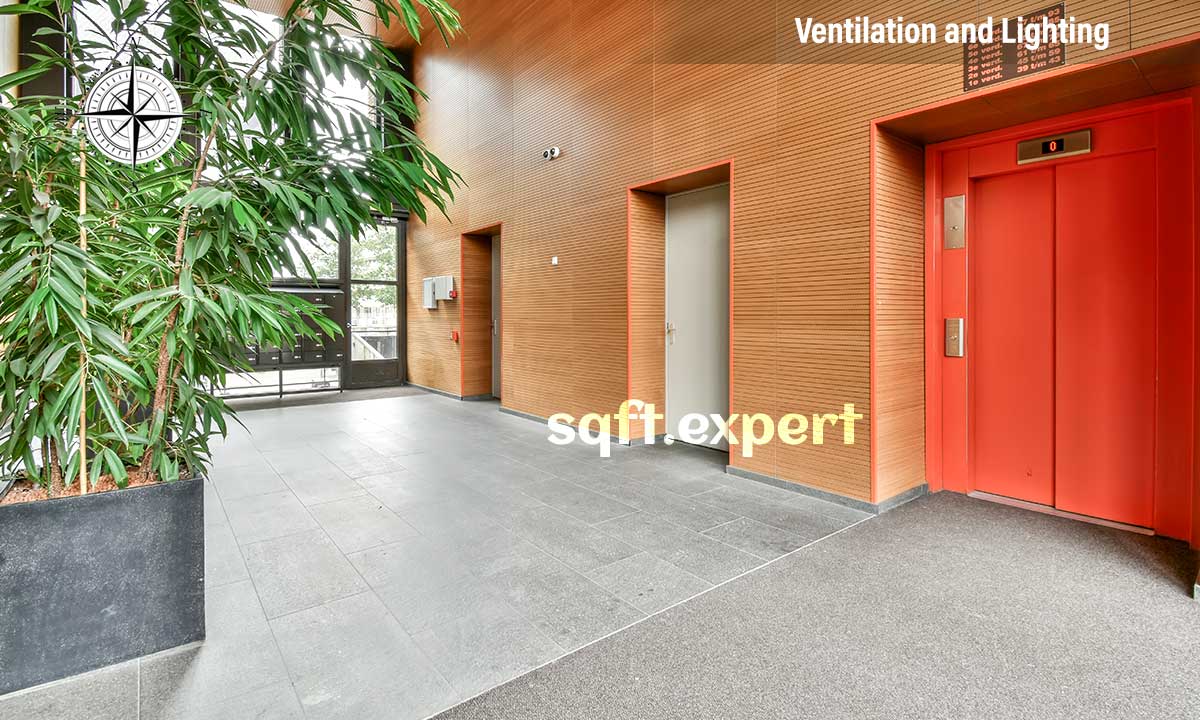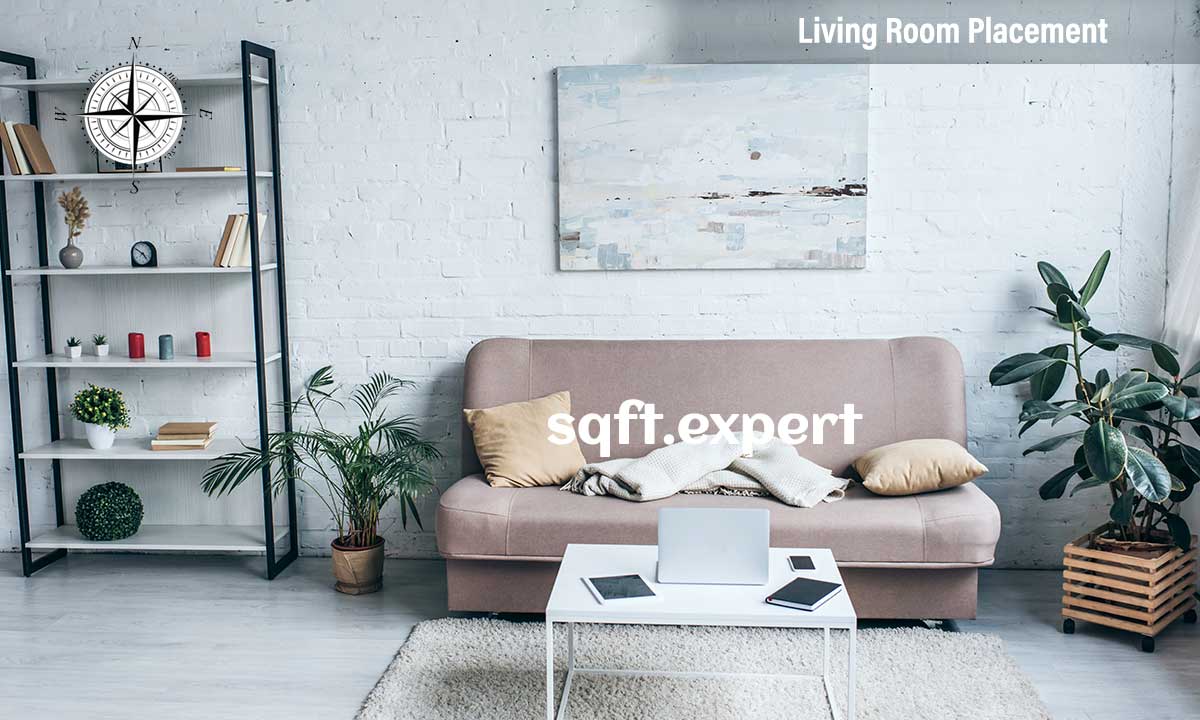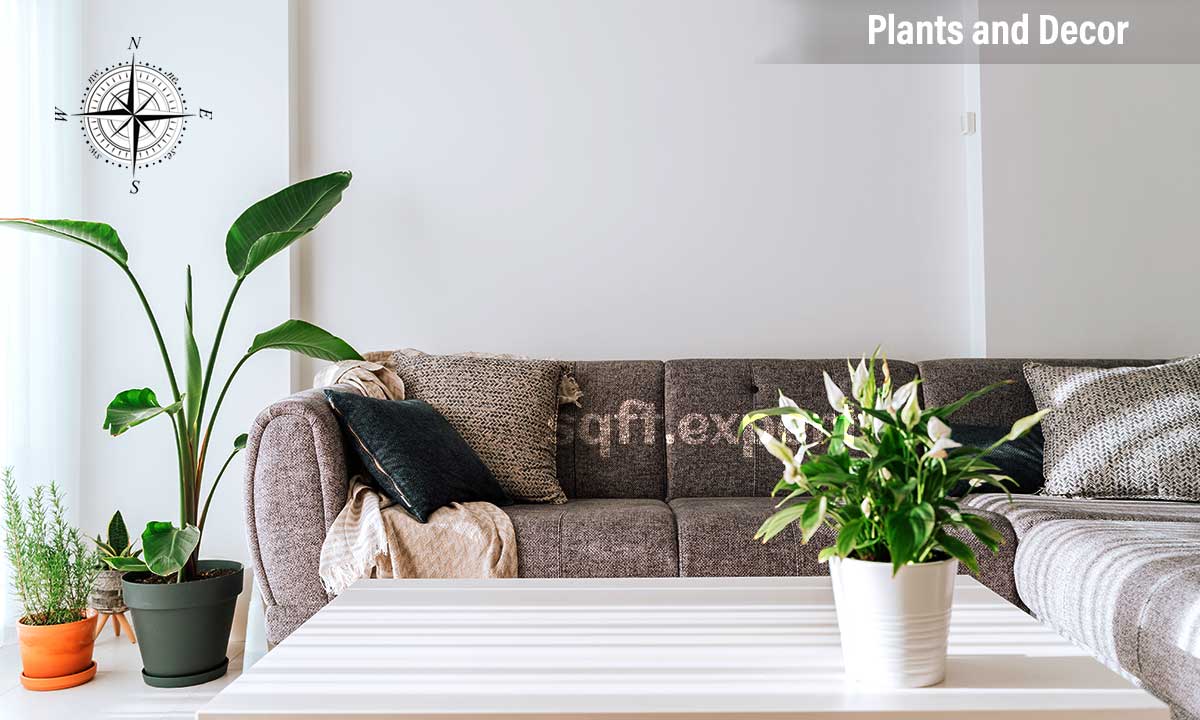Benefits of Having an East-Facing Entrance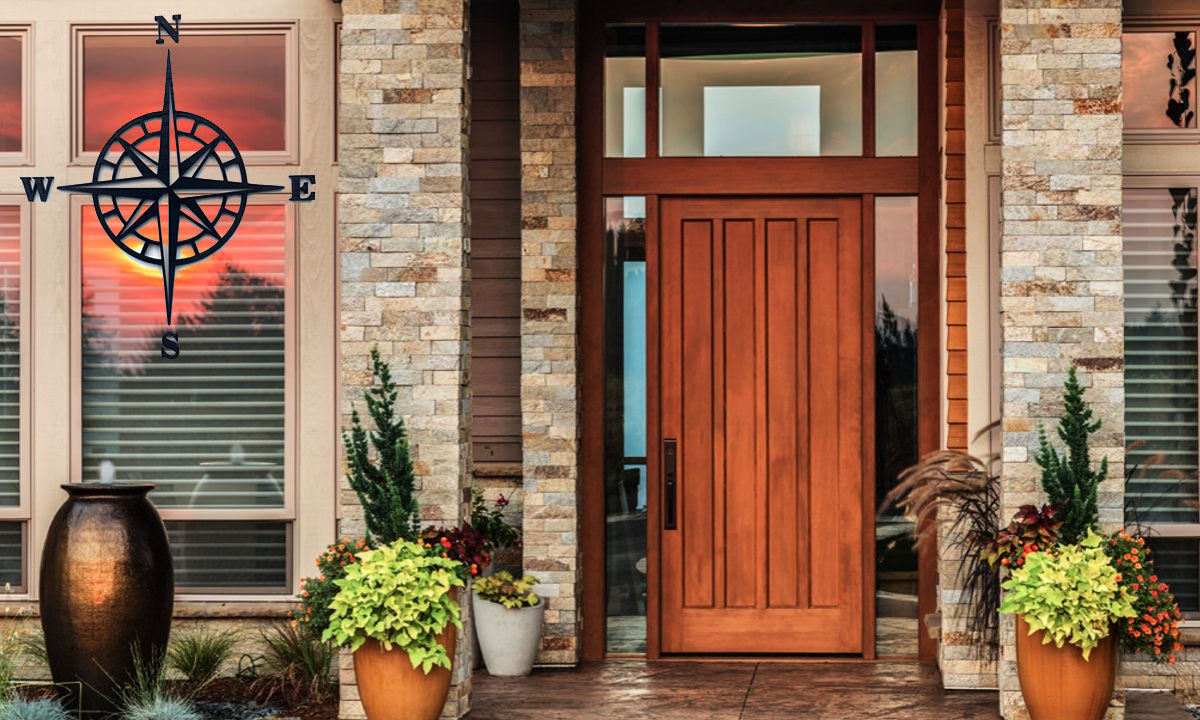
A Brief Synopsis
There is no doubt that purchasing a house is one of the biggest investments you can make in your lifetime. Not only does it protect you from the cold, the harsh world and the bad weather, but it is also your haven of tranquillity. If you are looking for good fortune and happiness (who wouldn’t?) then an east facing house is the right choice for you. At least that’s according to the ancient science called Vastu. Most Indians follow this Vastu principle when purchasing property and there is a reason for that. Vastu shastra literally translates to the science of architecture. It describes the design, the layout, the directions, and the measurements of various spaces. In simple words, the direction, layout, and other parameters determine whether or not a home will be beneficial for you. Now, as mentioned earlier, according to vastu, a house with an east facing one is auspicious. Let’s get into the nuances of the vastu plan for an east facing house.
How an East-Facing Entrance Allows Influx of Morning Sunlight Symbolising Positivity and Vitality?
An east-facing entrance holds a special significance in Vastu Shastra, as it is believed to allow the influx of morning sunlight, symbolising positivity and vitality. This alignment with the east carries profound implications for the energy within a home, contributing to an overall sense of well-being. Here's how an east-facing entrance facilitates the welcoming embrace of morning sunlight and the positive symbolism associated with it:
Alignment with the Sun's Path:
An east-facing entrance is positioned to align with the path of the rising sun. This orientation ensures that the home receives the first rays of sunlight in the morning, marking the beginning of a new day. In Vastu, this alignment is considered auspicious, signifying the start of positive energy and new opportunities.
Symbolism of Sunrise:
The sunrise is symbolic of new beginnings, optimism, and the renewal of life. When the entrance of a home faces east, it captures the essence of this symbolism, allowing the occupants to metaphorically "step into the light" each day. This alignment is seen as a source of positivity that sets a harmonious tone for the rest of the day.
Vitality and Energy Boost:
Morning sunlight is rich in natural light and vital energy. Exposure to this light is associated with improved mood, increased energy levels, and enhanced overall well-being. An east-facing entrance facilitates the entry of this invigorating sunlight into the home, contributing to a positive and vibrant atmosphere.
Circulation of Positive Prana (Life Force):
In Vastu philosophy, the east is associated with the flow of positive prana, or life force energy. An east-facing entrance is believed to allow this positive energy to circulate freely within the home. This circulation is thought to bring about a sense of vitality, health, and positive vibrations throughout the living space.
Promotion of Positivity and Optimism:
The morning sunlight streaming through an east-facing entrance is seen as a natural source of illumination that dispels darkness and negativity. This alignment is thought to promote positivity, optimism, and a sense of clarity, creating a conducive environment for mental and emotional well-being.
Enhancement of Indoor Spaces:
The orientation of an east-facing entrance is particularly beneficial for rooms and living spaces that directly receive the morning sunlight. This natural illumination not only reduces the need for artificial lighting but also enhances the aesthetic appeal of the interiors, creating a warm and inviting atmosphere.
In conclusion, the east-facing entrance in Vastu is more than just a directional preference; it is a deliberate alignment with the life-affirming qualities of the rising sun. By allowing the morning sunlight to permeate the living space, an east-facing entrance becomes a symbol of positivity, vitality, and the continuous cycle of renewal and growth in the home.
Benefits of East Facing House Vastu Plan
Designing a house with an east-facing Vastu plan is believed to bring about numerous benefits, according to Vastu Shastra, an ancient Indian architectural and design philosophy. Here are some of the key advantages associated with an east-facing house Vastu plan:
Optimal Sun Exposure:
An east-facing house receives abundant sunlight in the morning as the sun rises in the east. This exposure is considered auspicious and is believed to bring positive energy into the home. The gentle morning sunlight is also rich in Vitamin D, contributing to overall health and well-being.
Positive Energy Flow:
Vastu emphasises the flow of energy, and an east-facing house is thought to align with the natural energy currents. This alignment is believed to promote a positive and harmonious flow of energy throughout the home, fostering a sense of balance and tranquillity.
Ideal Entrance Placement:
The main entrance of the house is typically situated on the east side. This is considered favourable in Vastu, as it allows for the easy entry of positive energy and symbolises a new beginning each day with the rising sun.
Health and Well-being:
The morning sunlight from the east is associated with numerous health benefits. It is believed to enhance physical and mental well-being, promote a positive mindset, and contribute to a healthier lifestyle for the occupants of the house.
Improved Ventilation:
East-facing houses often have well-ventilated interiors, as prevailing winds tend to flow from the east. Proper ventilation is essential for maintaining a fresh and healthy indoor environment, and an east-facing plan can facilitate this natural airflow.
Positive Impact on Relationships:
Vastu associates the east with harmonious relationships. An east-facing house is thought to contribute to improved family relationships, communication, and overall emotional well-being, creating a conducive environment for fostering strong bonds.
Productivity and Focus:
The morning sunlight entering the house from the east is believed to enhance focus and productivity. This can be especially beneficial for spaces like home offices or study areas situated in the eastern part of the house.
Financial Prosperity:
Vastu suggests that an east-facing house can attract positive cosmic energies associated with financial prosperity. Aligning the house with the east is believed to enhance financial stability and abundance for the occupants.
Aesthetic Appeal:
The morning sunlight enhances the aesthetic appeal of the house, casting a warm and welcoming glow on the exterior. Landscaping, garden areas, and outdoor spaces on the east side can benefit from this natural illumination.
Balanced Energy Distribution:
Vastu principles aim for a balance of the five elements (earth, water, fire, air, and space). An east-facing house plan is designed to maintain this balance, contributing to a harmonious living environment.
Benefits of Puja Room With East Facing House Vastu Plan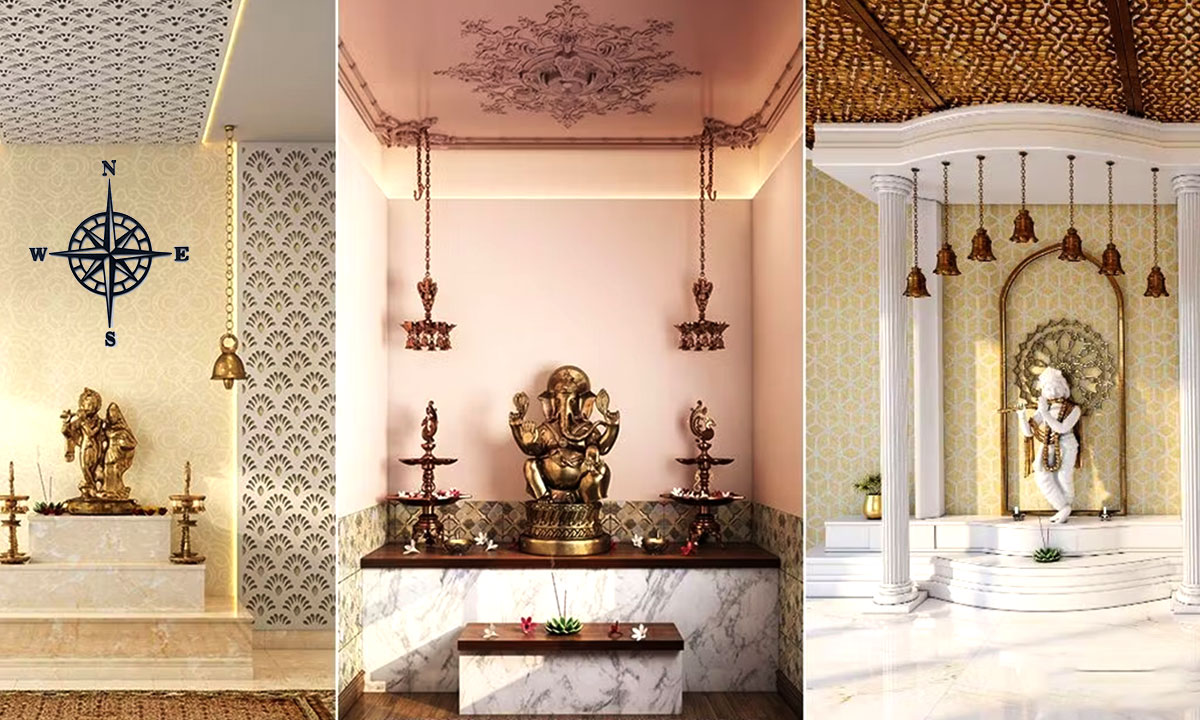
In Vastu Shastra, the puja room, or sacred space dedicated to prayer and meditation, holds special significance. When incorporated into an east-facing house Vastu plan, the puja room is believed to offer several benefits that align with spiritual and positive energy principles. Here are the key advantages:
Alignment with Sunrise:
An east-facing puja room allows for the placement of the deity or sacred space to face the east, symbolically aligning with the direction of the rising sun. This alignment is considered auspicious in Vastu, signifying a new beginning and the start of positive energy for the day.
Positive Energy Flow:
The east is associated with the flow of positive energy in Vastu. By having the puja room in this direction, it is believed to facilitate the smooth flow of positive energy throughout the home, creating a harmonious and spiritually uplifting environment.
Enhanced Spiritual Connectivity:
Morning sunlight, associated with spiritual purity, enters the east-facing puja room. This is believed to enhance the spiritual connectivity of the space, creating a serene atmosphere conducive to meditation, prayer, and contemplation.
Ideal Direction for Worship:
Vastu recommends facing east while performing prayers or rituals. An east-facing puja room allows the occupants to face this direction comfortably, creating a sense of alignment with cosmic energies during spiritual practices.
Natural Illumination:
Morning sunlight entering an east-facing puja room illuminates the space naturally. This not only adds to the aesthetic appeal but also symbolises the dispelling of darkness and ignorance, creating an atmosphere of purity and positivity.
Harmony and Balance:
The east is associated with the element of air, contributing to a sense of lightness and balance. Placing the puja room in this direction is believed to harmonise the five elements (earth, water, fire, air, and space), fostering a balanced and spiritually uplifting environment.
Favourable Vastu Zone:
The northeast corner of a house is considered a highly auspicious and divine zone in Vastu. An east-facing puja room aligns with this favourable zone, attracting divine energies and blessings into the home.
Positive Influence on Family Relationships:
Vastu suggests that an east-facing puja room can positively influence family relationships. It is believed to create an atmosphere of mutual respect, love, and understanding among family members.
Promotion of Peace and Serenity:
The spiritual ambiance created by an east-facing puja room contributes to a peaceful and serene atmosphere within the home. This sacred space becomes a retreat for introspection, prayer, and moments of tranquillity.
Facilitation of Daily Rituals:
The orientation of the east-facing puja room makes it conducive for daily rituals and worship. It encourages regular spiritual practices, fostering a sense of discipline and devotion among the occupants.
How East Facing Entrance Promotes Physical and Mental Well-Being For The Occupants?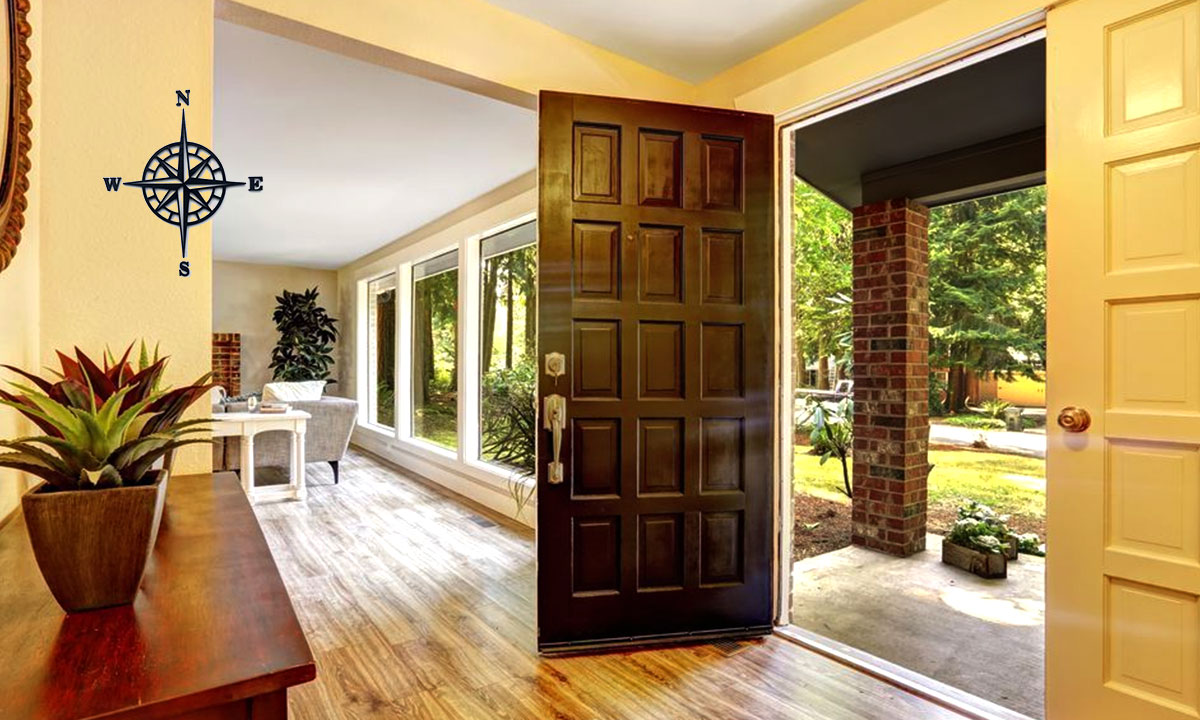
An east-facing entrance is believed to have a positive impact on the physical and mental well-being of the occupants according to Vastu principles. The orientation towards the east is associated with the rising sun, and this alignment is thought to bring numerous benefits for health and overall wellness. Here's how an east-facing entrance promotes physical and mental well-being:
Morning Sunlight Exposure:
The east-facing entrance allows the occupants to receive the gentle morning sunlight. Exposure to natural sunlight in the early hours is associated with the synthesis of vitamin D, which is crucial for bone health, immune function, and overall well-being.
Enhanced Circadian Rhythms:
Exposure to natural light, especially in the morning, helps regulate circadian rhythms. This natural synchronisation supports a healthy sleep-wake cycle, contributing to better sleep quality and overall physical well-being.
Positive Impact on Mood:
Natural sunlight is known to stimulate the production of serotonin, a neurotransmitter associated with mood regulation. An east-facing entrance, allowing for morning sunlight exposure, is thought to contribute to positive moods and emotional well-being.
Boosted Energy Levels:
Sunlight exposure, particularly in the morning, is linked to increased energy levels and alertness. An east-facing entrance facilitates the entry of this invigorating sunlight, providing occupants with a natural energy boost at the beginning of the day.
Stress Reduction:
Sunlight exposure has been shown to reduce cortisol levels, a hormone associated with stress. An east-facing entrance, allowing for regular exposure to morning sunlight, may contribute to lower stress levels and increased feelings of relaxation.
Improved Mental Clarity and Focus:
The gentle morning sunlight from the east is believed to enhance mental clarity and focus. This can be especially beneficial for individuals who have spaces like home offices or study areas near the east-facing entrance.
Promotion of Healthy Habits:
The positive energy associated with an east-facing entrance is believed to inspire healthy habits. This can include a more consistent morning routine, such as morning walks, exercise, or meditation, contributing to overall physical fitness and mental well-being.
Connection with Nature:
An east-facing entrance allows occupants to connect with the natural environment. This connection is thought to have psychological benefits, promoting a sense of harmony with nature and a positive outlook on life.
Harmonious Living Environment:
Vastu principles emphasise the importance of energy flow in the home. An east-facing entrance is believed to contribute to a harmonious living environment by allowing positive energy to enter and circulate freely throughout the space.
Healthy Sleep Patterns:
Exposure to morning sunlight helps regulate melatonin production, contributing to healthy sleep patterns. The alignment of an east-facing entrance encourages a natural sleep-wake cycle, positively influencing the occupants' sleep quality.
How Vastu Principles Linking An East Facing Entrance Lead To Financial Stability and Prosperity?
Vastu principles suggest that an east-facing entrance can be associated with financial stability and prosperity. The alignment with the east and its connection to the rising sun symbolise a new beginning, positivity, and the influx of energy that is believed to positively influence financial aspects. Here's how Vastu principles linking an east-facing entrance contribute to financial stability and prosperity:
Alignment with the Sun's Energy:
The east is considered the direction of the rising sun, representing the source of life and energy. Aligning the entrance with the east is believed to allow the positive energy of the sun to enter the home, symbolising a fresh start and attracting abundance.
Vastu associates the east with positive cosmic energies, and an east-facing entrance is thought to tap into these cosmic influences. This alignment is believed to create a conducive environment for financial growth and prosperity.
Attracting Wealth Energies:
The positive energy flowing through an east-facing entrance is thought to attract wealth energies into the home. This can contribute to financial stability and the overall prosperity of the household.
Harmonious Energy Flow:
Vastu principles emphasise the importance of unobstructed energy flow within the home. An east-facing entrance is believed to facilitate the smooth circulation of positive energy, creating a harmonious environment that is conducive to financial success.
Sunrise Symbolism:
Sunrise symbolises new opportunities and the beginning of a fruitful day. An east-facing entrance aligns with this symbolism, signifying the start of positive ventures and financial endeavours.
Favourable Direction for Treasury:
In Vastu, the northeast direction is associated with the treasury or financial stability. An east-facing entrance contributes to the overall positive energy in this direction, fostering financial well-being.
Encouraging Positive Mindset:
The positive energy associated with an east-facing entrance is believed to influence the mindset of the occupants. A positive and optimistic mindset is often considered a key factor in attracting financial success and opportunities.
Promoting Financial Discipline:
Vastu principles encourage a disciplined and organised living space. An east-facing entrance is thought to promote a sense of order and discipline, which can extend to financial management and planning.
Inspiring Productivity and Growth:
The morning sunlight that enters through an east-facing entrance is associated with increased productivity and growth. This can have a positive impact on professional endeavours, career growth, and financial prosperity.
Enhancing Business Opportunities:
For homes with a home office or businesses within, an east-facing entrance is believed to attract positive energies that can enhance business opportunities, leading to financial success.
Are East Facing Houses Good?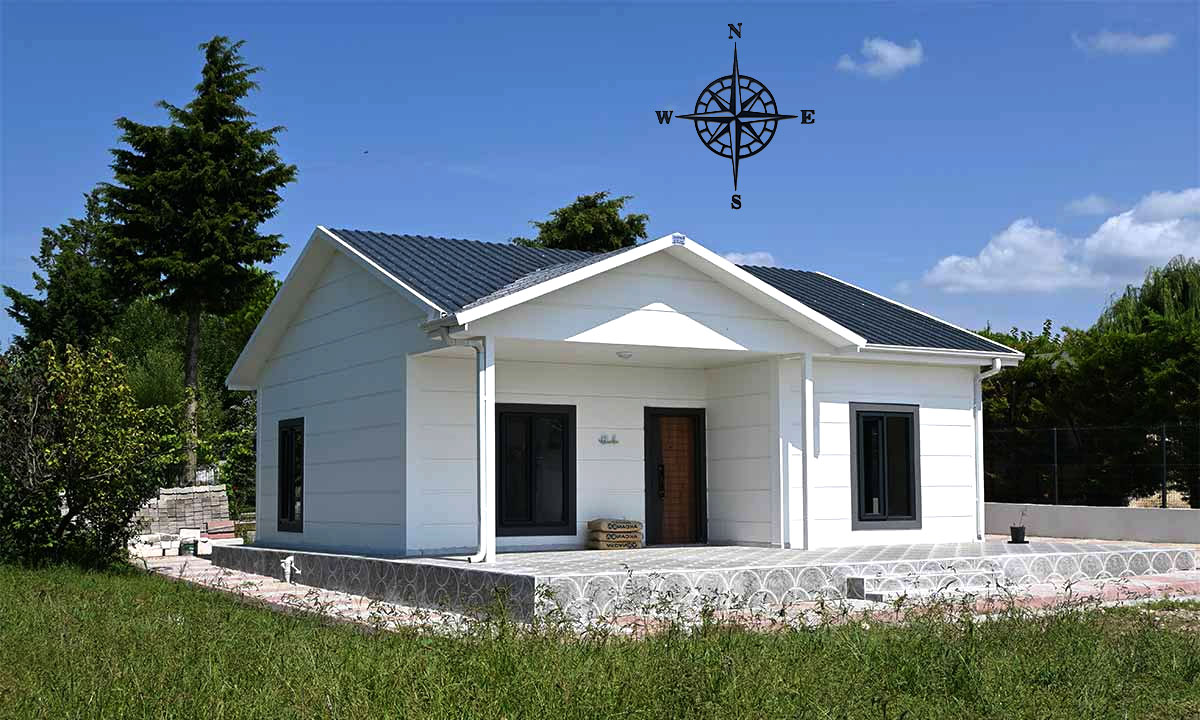
East-facing houses are considered favourable in various cultural and architectural traditions, including Vastu Shastra. This alignment is believed to bring several advantages, contributing to the overall well-being and positivity of the occupants. Here's why east-facing houses are often regarded as good:
Abundance of Morning Sunlight:
An east-facing house receives abundant sunlight in the morning as the sun rises in the east. This natural illumination is not only aesthetically pleasing but also promotes a positive and vibrant atmosphere within the home.
Positive Energy Flow:
According to Vastu principles, the east is associated with the flow of positive energy. An east-facing house is believed to allow the entry of this positive energy, creating a harmonious and uplifting living environment.
Symbolism of New Beginnings:
The east is symbolic of new beginnings and the start of a new day. Aligning the house in this direction is seen as auspicious, representing a fresh start, positivity, and the promise of new opportunities.
Healthy Living Environment:
Morning sunlight from the east is known to have health benefits, including the synthesis of Vitamin D. An east-facing house supports a healthier living environment, contributing to the physical well-being of the occupants.
Optimal Ventilation:
East-facing houses often benefit from prevailing winds coming from the east. This natural airflow promotes optimal ventilation, ensuring a fresh and well-ventilated indoor environment.
Facilitation of Daily Routines:
The alignment of an east-facing house supports daily routines, especially morning rituals. It provides a conducive environment for activities such as meditation, exercise, or morning walks, contributing to a healthier lifestyle.
Favourable Direction for Main Entrance:
Vastu recommends the main entrance to be in the east or north direction. An east-facing house, therefore, allows for a favourable placement of the main entrance, which is considered auspicious and attracts positive energy.
Promotion of Positive Mindset:
The morning sunlight and positive energy associated with an east-facing house are believed to influence the mindset of the occupants positively. It fosters a sense of optimism, clarity, and a positive outlook on life.
Connection with Nature:
East-facing houses provide a direct connection with nature, allowing occupants to witness the beauty of sunrise and enjoy the changing colours of the sky. This connection with the natural environment contributes to a sense of tranquillity.
Harmonious Family Relationships:
Vastu principles link the east with harmonious family relationships. An east-facing house is thought to create an atmosphere conducive to strong bonds, effective communication, and mutual understanding among family members.
How East Facing Entrance Symbolises Peace and Harmony in Relationships?
An east-facing entrance is often symbolically associated with peace and harmony in relationships according to Vastu principles. The alignment of the entrance towards the east is believed to harness positive cosmic energies and promote a balanced flow of energy within the home. Here's how an east-facing entrance is thought to symbolise peace and harmony in relationships:
Sunrise Symbolism:
The east is the direction where the sun rises, symbolising the beginning of a new day and a fresh start. This symbolism aligns with the idea of renewal, hope, and the opportunity to bring positivity into relationships.
Positive Energy Flow:
Vastu principles associate the east with the flow of positive energy. An east-facing entrance is believed to facilitate the smooth circulation of this positive energy throughout the home, fostering a harmonious atmosphere.
Auspicious Vastu Zone:
The northeast corner, which includes the east direction, is considered highly auspicious in Vastu. This zone is associated with purity and positive energies, creating an environment conducive to peaceful relationships.
Optimal Entrance Placement:
Vastu recommends placing the main entrance in the east or north direction. An east-facing entrance allows for the entrance to be positioned in an auspicious zone, contributing to the overall positive energy within the home.
Morning Sunlight Influence:
An east-facing entrance welcomes the gentle morning sunlight into the home. This natural illumination is associated with positivity, warmth, and the dispelling of darkness, creating an uplifting ambiance for the occupants.
Balanced Elemental Energies:
Vastu emphasises the balance of the five elements (earth, water, fire, air, and space) within the home. An east-facing entrance contributes to this balance, fostering an environment where relationships can thrive in equilibrium.
Encouragement of Open Communication:
The positive energy associated with an east-facing entrance is believed to encourage open and effective communication among family members. This contributes to understanding, empathy, and a sense of unity within the household.
Promotion of Emotional Well-being:
The harmonious flow of energy from an east-facing entrance is thought to positively impact the emotional well-being of the occupants. This, in turn, creates an environment where individuals feel emotionally supported and content in their relationships.
Creation of Tranquil Spaces:
An east-facing entrance allows for the creation of tranquil spaces within the home. This can include areas designated for relaxation, reflection, or bonding, fostering a sense of peace that extends to interpersonal relationships.
Positive Mindset and Outlook:
The symbolism of the east, associated with the rising sun and new beginnings, is believed to influence the mindset of the occupants. This positive outlook contributes to a harmonious atmosphere where conflicts are resolved with a constructive and optimistic approach.
Importance of East Facing Homes Help in Career Advancement & Attract New Opportunities
The importance of east-facing homes in Vastu is often associated with career advancement and the attraction of new opportunities. According to Vastu principles, the alignment of a home towards the east is believed to harness positive cosmic energies, creating an environment conducive to professional growth and success. Here's how the importance of east-facing homes is thought to benefit career advancement and opportunities:
Alignment with the Sun's Energy:
The east is the direction of the rising sun, symbolising new beginnings and positive energy. An east-facing home aligns with this energy, fostering a sense of vitality and enthusiasm that can positively impact one's career.
Morning Sunlight Influence:
East-facing homes receive abundant morning sunlight. This natural illumination is associated with increased energy levels, improved mood, and heightened focus—all of which are beneficial for productivity and career performance.
Positive Cosmic Influences:
The east is considered to be associated with positive cosmic energies. Aligning a home in this direction is believed to attract cosmic influences that support career growth, creating opportunities for advancement and success.
Optimal Entrance Placement:
Vastu recommends placing the main entrance of the home in the east or north direction. An east-facing entrance is considered auspicious, allowing for a positive energy flow that can positively influence the career of the occupants.
Favourable Vastu Zone:
The northeast corner, including the east direction, is regarded as highly auspicious in Vastu. This zone is associated with positive energies that can enhance overall well-being, including professional success.
Enhanced Focus and Concentration:
The morning sunlight entering an east-facing home is believed to enhance mental clarity, focus, and concentration. This can contribute to increased productivity and efficiency in one's professional endeavours.
Promotion of Positive Mindset:
The positive energy associated with an east-facing home is thought to influence the mindset of the occupants positively. A positive and optimistic mindset can be beneficial for approaching challenges in the workplace with resilience and creativity.
Attracting Favourable Opportunities:
The positive energy flow from an east-facing home is believed to attract favourable opportunities in one's career. This may include job offers, promotions, or partnerships that contribute to professional growth.
Balanced Energy Circulation:
Vastu emphasises the balance of energy within the home. An east-facing home contributes to a harmonious circulation of energy, ensuring a balanced living environment that supports both personal and professional aspects of life.
Encouragement of Professional Relationships:
The positive energy associated with an east-facing home is thought to encourage positive interactions and relationships in the workplace. Healthy professional relationships can contribute to career advancement and the creation of new opportunities.
Who Can Live in an East-Facing Home?
Vastu believes that every property is unique and every person is different. Therefore, it is important to evaluate your horoscope or 'Kundli' and your profession to determine if an east facing house is right for you. Generally, east facing houses are suitable for freelancers and self-employed people. The sun has an influence on the east direction. According to astrology, the Sun is associated with occupations that involve power, authority, and elegance. In other words, people who work in government, politics, ministry, business, or creative fields such as photography, writing, music, or dancing are all good candidates for an east facing house.
In your east facing house Vastu plan, make sure that the north and northeast corners of your east facing house are clean, free of dirt, dust bins, and clutter. Place a wooden name plate outside your east facing house. If you are a student living in an east facing house, decorate the northeast zone with crystals. You can use mountain salt to cleanse your east-facing house to increase positive energy and positive vibes. The east side of your house should have open spaces to let in natural sunlight. If you don’t, it can lead to health issues such as birth defects.
East-Facing Home and the Main Door Placement
To understand the Vastu scheme, you need to understand Vastu padas. So, let’s say you want to divide the eastern length of your house into nine equal parts. So, start by dividing the northeast corner of your house and extend it all the way to the southeast part of your house. Each divided part of your house is called a pada. The northeast corner will be your first pada, and the southeast corner will be your last pada. Now that you have all the padas, you need to know where to put the main door. According to the main door vastu for east facing houses, this placement can bring you glory and fame. If you can’t change the main door placement in an east facing house, then you need to apply Vastu remedies. If your main door is in the 5th pada, leave about 6 inches of space from your northeast walls per vastu, as the northeast side of your house is the best way to enter your home.
East Facing House Vastu For Kitchen
According to kitchen Vastu, the kitchen is located in the southeast direction of the house facing east. Alternatively, the kitchen is placed in the northwest direction of the house. However, the kitchen should not be placed in the north, west or northeast direction. The cook should face the southeast direction in the kitchen facing south-east. The meals should also be cooked in the northwest direction in a kitchen facing north-west. Cooking tools and apparatus like oven, toaster or cooking stove should also be placed in the south-east area. The gas cylinder, other cooking equipment and washbasin should never be placed on the same platform, or parallel to one another in the kitchen. This can have a negative effect on a person’s behaviour because fire and water are opposite elements. There should be a balance between fire and water elements.
Dining Room and East Facing House Vastu
Vastu says that the dining room in an east facing house follows the kitchen in an east, west, or south direction. Also, the door of the dining room shouldn’t face the door of the main entrance. The ideal seating arrangement in the dining room is east, north, or west side. The other members of the family may sit on the eastern, west, or north sides, but the head of the family should always sit on the eastern side while eating. The room needs to be well-ventilated and well-lit with enough sunlight. Family members shouldn’t watch TV while eating as this will also prevent mindful eating. Dining table shouldn’t be cluttered because it will prevent positive energy from flowing freely.
Living Room and East Facing House Vastu Plan
If the living room is located on the northeast corner of the house facing east, it is considered good luck. Also, make sure that the north and eastern side walls are slightly slimmer and shorter than the west and south walls of the house. These placements and adjustments contribute to prosperity. Living rooms should be very light and the location of the room should be north-east of the house as per the east facing house vastu plan. The ceiling of the room should also be lower than other rooms in your house. The room should not be near washrooms and it should never be next to a bathroom. It is always good to have a separate room for pooja. If space is limited, you can keep the temple in a corner of the room or you can mount it on a wall. The room can face anywhere in your home apart from the south. Keep the room or temple clutter-free. Do not crack or break the idols or photos stored in the temple.have pictures of landscapes or natural beauty. Living rooms are an important part of a home and should be arranged in a way that promotes positivity and good relationships.
East Facing House Vastu Plan for Puja Room
This room should be located in the northeast direction of the house as per the east side of the house according to the Vastu plan. The ceiling of the room should also be lower than the other rooms of the house. The room should not be near washrooms and it should never be next to a bathroom. It is always a good idea to have a separate room for the puja ceremony. However, if you have limited space, you can keep the temple in a corner or mount it on a wall. The temple can be facing any direction in your house except the south. The room or temple should also be clutter-free. The idols or pictures stored in the temple should never be cracked or broken.
East Facing Vastu House Design for Master Bedroom
According to the east facing direction of the house for the master bedroom, the bedroom should face southwest. The bedroom should also be larger than the rest of the rooms in the house. The bed should be placed against the west or the south wall in the room. According to Vastu the ideal position for the bed is the south or the west wall in the room, the head should be facing south or west and the legs should be facing north or east. The bed should not face directly into the bathroom, and the bathroom door should always be closed.
Study Room Vastu Plan for an East Facing House
A study room facing east or west is ideal for an east facing house. The next direction is north. Make sure your study room door is not next to your study chair. You also want to leave some space between your study table and the wall so that energy can flow freely.
Staircase Vastu for an East Facing Home
Don’t have a staircase on the northeast corner of your house facing east. Northwest corner of the southeast corner is the best place for a staircase in an east facing house. Staircases shouldn’t be in a central location. Staircases should wind down in a clockwise direction. No room should be placed under the staircase, although the space can be used for storage. Never have a spiral staircase in your house. This type of staircase is banned in Vastu because it brings evil energy inside the house. It can also affect the mental health of your whole family. There should be no broken steps. Main door should never be placed in front of the staircase and should not be visible to visitors. Staircase steps should be evenly spaced but not end in zero.
Indoor Plants for an East Facing Homes
You might be excited to add some plants to your home. Indoor greenery can instantly brighten up your living room or balcony. However, these plants will thrive in an east facing home.
- Money Plant
- Neem Plant
- Holy Basil (Tulsi)
- Aloe Vera
- Citrus plants like lemon
Vastu Anomalies in an East Facing House
Keep these Vastu anomalies in mind when trying to make the most of your east-facing house: If you’re dealing with health issues, strained relationships or lack of progress in your work, then there may be some negative energy coming from the east direction. It’s possible that stairs, kitchen and washrooms are located in the east direction of your house. The outward opening and the east-facing doors of your house are also considered Vastu defects. The total number of doors in your house should not be an odd number or the last digit should be zero. Any kind of clutter on the east side of your house will attract negative energy. Therefore, if you live on the east-facing side of your house, keep it clutter-free, and well ventilated.
East Facing House Vastu Tips
- Corners like the north and the north-east should be kept clean and tidy.
- A wooden name plate outside an east -facing house is recommended.
- Adorn the north-east zones with crystals, if you have a student living in the house.
- For enhancing positive energy and good vibes, one can purify an east-facing house with mountain salt.
- To ensure an unhindered influx of sunlight leave vacant spaces on the east side of the house.
- For good health and prosperity a patio or a balcony carved out in the east during the planning stage will be beneficial.
- Even during the construction phase, avoid keeping clutter or garbage in the front area of the plot as this may block positive energy.
- Avoid growing large trees on the eastern as well as on the northern sides of the house.
- As per Vastu it is not advisable to place any bedrooms or toilets in the northeast corner of the house.
- If you are having an east facing house, the garbage should not be located in the northeast direction.
- Auspicious symbols like Om, Swastik are said to bring good fortune for homes with an east-facing entrance.
Vastu Tips for Flats Having an East Facing Entrance
Vastu Shastra, an ancient Indian architectural science, emphasises the importance of harmonising living spaces with the natural elements for positive energy flow and well-being. When it comes to flats with an east-facing entrance, adhering to certain Vastu tips can help enhance the overall positive energy in the living space. Here are some guidelines:
Entrance Placement:
- The main entrance of the flat should ideally be in the east direction. This allows the morning sunlight, which is considered auspicious, to enter the home.
- Ensure that the entrance is well-lit and free from obstructions. A well-lit entrance attracts positive energy.
Door Design and Color:
- Choose a solid and sturdy door for the main entrance. Avoid creaking or squeaking doors, as they may create negative energy.
- Opt for light and vibrant colours for the entrance door, such as shades of green, blue, or brown. These colours symbolise growth, peace, and stability.
Threshold Placement:
- The threshold should be free from any obstacles. Avoid placing furniture or objects right at the entrance, as it may obstruct the flow of positive energy.
Auspicious Symbols:
- Decorate the entrance with auspicious symbols such as Swastik, Om, or traditional rangoli designs. These symbols are believed to bring prosperity and positive energy.
Ventilation and Lighting:
- Ensure proper ventilation in the east-facing flat. Good airflow allows positive energy to circulate freely.
- Use bright, natural lighting in the eastern areas of the flat. This not only enhances the positive energy but also creates a cheerful and vibrant atmosphere.
Living Room Placement:
- Ideally, the living room should be towards the east or northeast side of the flat. This placement allows the family to spend quality time in a positive environment.
Bedroom Placement:
- Place the bedrooms in the south or southwest directions for a sense of stability and security. Ensure that the beds are positioned with the head towards the south for better sleep.
Kitchen Location:
- The kitchen can be located in the southeast corner of the flat. Ensure that the cook faces east while preparing meals, as this is considered auspicious.
Avoid Clutter:
- Keep the entrance area clutter-free. Clutter can block the positive energy flow and create a sense of stagnation.
Plants and Decor:
- Place indoor plants, especially in the east and northeast corners, to enhance positive energy. Avoid thorny or sharp-edged plants.
- Decorate the east-facing entrance with positive and uplifting artwork or sculptures.
Main Gate Vastu for East Facing House
In Vastu Shastra, the main gate or entrance of a house is considered a crucial factor in determining the flow of positive energy (prana) into the home. For an east-facing house, where the main entrance is oriented towards the east, it's important to follow certain Vastu principles to ensure the harmonious flow of energy. Here are some key guidelines for the main gate Vastu of an east-facing house:
Entrance Direction:
- The main gate should ideally be positioned in the exact east direction or as close to it as possible. This allows the morning sunlight, which is considered auspicious, to enter the home and bring positive energy.
Gate Design and Materials:
- Choose a well-designed and aesthetically pleasing gate for the main entrance. The gate should be in good condition, free from rust or any other visible damage.
- Opt for solid and durable materials for the gate, such as metal or wood. Avoid flimsy or weak materials that may give an impression of instability.
Gate Size and Proportions:
- The size of the main gate should be proportionate to the overall size of the house. It should not be too small or too large compared to the building.
- Ensure that the main gate is taller than the surrounding boundary walls. This is believed to bring a sense of security and prominence to the entrance.
Threshold Area:
- Keep the area around the main gate clean and well-maintained. Avoid clutter or any obstacles near the entrance, as this may hinder the smooth flow of energy.
Auspicious Symbols and Decorations:
- Decorate the main gate with auspicious symbols and decorations, such as Swastik, Om, or traditional motifs. These symbols are believed to invite positive energy into the home.
- Avoid using dark or dull colours for the gate. Opt for lighter shades that complement the overall colour scheme of the house.
Good Lighting:
- Ensure proper lighting around the main gate. Adequate illumination not only adds to the security but also attracts positive energy. Consider using subtle and warm lighting for a welcoming ambiance.
Nameplate Placement:
- Place a clear and visible nameplate near the main gate with the name of the residents. This is believed to attract positive vibrations and prosperity into the home.
Landscaping and Plants:
- Introduce greenery and plants around the main gate, especially on the eastern side. Plants symbolise growth and vitality and contribute to a positive environment.
Avoid Obstructions:
- Ensure that there are no obstructions directly in front of the main gate, such as trees, utility poles, or large structures. Unobstructed entry allows for a smooth inflow of positive energy.
Regular Maintenance:
- Keep the main gate well-maintained. Regularly oil the hinges, fix any issues promptly, and ensure that the gate opens and closes smoothly.
East Facing House Vastu
East Facing House Vastu Benefits:
Vaastu Shastra, the ancient Indian science of architecture, emphasises the importance of directional alignments in building homes. Among the various orientations, an east-facing house holds significant benefits. Understanding the east facing house Vastu benefits can help you create a harmonious living environment that promotes health, prosperity, and well-being.
One of the primary east facing house Vastu benefits is the abundance of natural sunlight. The east direction is associated with the rising sun, which brings positive energy and vitality into the home. Early morning sunlight is rich in Vitamin D, essential for good health. This natural light can improve the mood and overall well-being of the inhabitants, creating a cheerful and vibrant atmosphere.
In Vastu, the east direction is governed by the Sun God, or Surya. An east-facing entrance is believed to invite his blessings, leading to prosperity, success, and happiness. This orientation is particularly beneficial for those in leadership roles or professions requiring fame and recognition. It is said to enhance one's social status and bring respect and honour.
Moreover, an east-facing house is thought to encourage clarity of mind and better decision-making. The energy from the east direction supports intellectual growth and concentration, making it ideal for homes with students or professionals who need to focus on their work.
From a practical standpoint, an east-facing house can also provide better ventilation and airflow. This helps in maintaining a fresh and healthy living environment, reducing the risk of respiratory issues and other health problems.
The East Facing House Vastu benefits are manifold, encompassing physical health, mental clarity, and overall prosperity. By aligning your home with the principles of Vastu Shastra, you can harness these positive energies, creating a living space that supports and enhances your quality of life. Whether building a new home or renovating an existing one, considering an east-facing orientation can bring lasting benefits to you and your family.
Benefits of Vastu:
Vastu Shastra, an ancient Indian science of architecture and design, emphasises the harmonious alignment of structures with natural forces. The benefits of Vastu are numerous, extending beyond aesthetics to impact the health, prosperity, and overall well-being of the inhabitants. By adhering to Vastu principles, you can create a living environment that promotes balance and positive energy.
One of the key benefits of Vastu is the enhancement of health and well-being. Vastu principles ensure that spaces are designed to optimise natural light and ventilation, which are crucial for maintaining physical health. Proper placement of rooms and furniture according to Vastu can reduce stress, improve sleep quality, and increase overall vitality.
Prosperity and financial success are also closely linked to Vastu. By aligning your home or workplace with Vastu guidelines, you can attract positive energies that foster growth and abundance. For example, placing the main entrance in an auspicious direction, like north or east, invites opportunities and good fortune. Similarly, positioning the kitchen in the southeast corner ensures a steady flow of wealth and resources.
Mental clarity and emotional stability are significant benefits of Vastu. Spaces designed according to Vastu principles promote calmness and tranquillity, aiding in better concentration and decision-making. This is particularly beneficial for students and professionals who require a focused and serene environment for optimal performance.
Moreover, Vastu fosters harmonious relationships by creating a balanced and peaceful living space. Proper placement of bedrooms, living areas, and even decorative elements can enhance interpersonal bonds and reduce conflicts among family members.
The Benefits of Vastu extend far beyond mere architectural design. By incorporating Vastu principles into your home or workplace, you can create an environment that supports physical health, financial prosperity, mental clarity, and harmonious relationships. Whether building a new or renovating an existing space, embracing Vastu Shastra can lead to a more balanced and fulfilling life.
East Facing House Vastu Plan 3D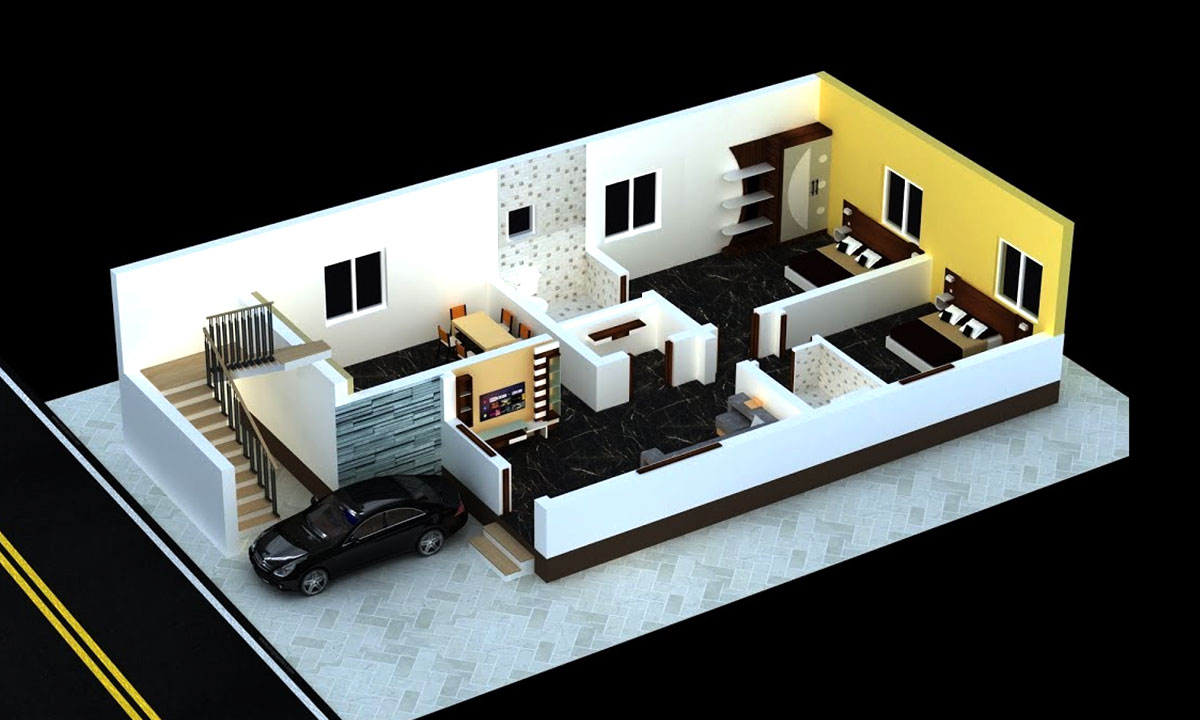
Creating a 3D Vastu-compliant plan for an east-facing house involves incorporating key Vastu principles into the design to enhance positive energy flow and promote harmony within the living space. Here's a conceptual description of a 3D Vastu plan for an east-facing house:
1. Main Entrance:
- The main entrance is located in the east direction, allowing the home to receive the beneficial morning sunlight.
- A well-designed and aesthetically pleasing main door is situated at the centre of the eastern wall. It is adorned with auspicious symbols and a nameplate for positive vibrations.
2. Living Room:
- The living room is ideally placed in the northeast or east portion of the house, ensuring a positive and vibrant atmosphere.
- Large windows on the east and north walls allow ample natural light into the living space, creating a cheerful and well-lit environment.
3. Kitchen:
- The kitchen is situated in the southeast corner of the house, with the cooking platform facing east. This placement is in accordance with Vastu guidelines for the kitchen.
- Adequate ventilation is provided, and the kitchen is organised to promote efficient workflow.
4. Bedrooms:
- Bedrooms are strategically placed in the south or southwest areas for stability and security.
- The master bedroom is preferably located in the southwest corner with the bed positioned so that the head points towards the south for better sleep.
5. Bathrooms and Toilets:
- Bathrooms and toilets are ideally placed in the west or northwest corners of the house. Ensuring proper plumbing and drainage is essential for maintaining a positive energy balance.
6. Pooja Room:
- A dedicated pooja room is located in the northeast corner of the house, away from the bedrooms and bathrooms. The altar faces east for spiritual positivity.
- The pooja room is well-lit and adorned with sacred symbols and images.
7. Dining Area:
- The dining area is ideally situated in the east or northeast part of the house. This placement is conducive to positive energy during meal times.
- Large windows or doors opening towards the east enhance the dining experience with natural light.
8. Staircase:
- If the house has multiple floors, the staircase is preferably located in the south, west, or southwest corner. A clockwise ascent is considered auspicious.
- The staircase design is open and well-lit to ensure a smooth and positive transition between floors.
9. Garden or Outdoor Space:
- An open space or garden in the northeast or east of the house promotes positivity and is suitable for outdoor activities.
- Planting vibrant and auspicious plants in the east or north adds to the overall positive energy of the property.
10. Overall Layout:
- The overall layout is spacious, with a balanced distribution of rooms and open spaces.
- Clutter-free zones are maintained, and furniture placement follows Vastu guidelines for optimal energy flow.
How Architectural Elements and Landscaping can be Aligned With Vastu Principles for an East Facing Entrance
Aligning architectural elements and landscaping with Vastu principles for an east-facing entrance is crucial to promote positive energy flow and create a harmonious living environment. Here's a guide on how to design the architecture and landscaping in accordance with Vastu for an east-facing entrance:
Architectural Elements:
Entrance Placement:
- Ensure that the main entrance is in the exact east direction or as close to it as possible. This allows the home to receive the auspicious morning sunlight.
- The entrance should be well-lit and designed with a sense of openness to welcome positive energy.
Door Design and Color:
- Choose a solid and aesthetically pleasing door for the entrance. Avoid creaking or squeaking doors, as they may create negative energy.
- Opt for light and vibrant colours for the entrance door, such as shades of green, blue, or brown, symbolising growth, peace, and stability.
Threshold Area:
- Keep the threshold area clean and clutter-free. Avoid placing any obstacles or heavy furniture near the entrance as it may obstruct the energy flow.
Auspicious Symbols:
- Decorate the entrance with auspicious symbols like Swastika, Om, or traditional rangoli designs. These symbols are believed to bring prosperity and positive energy.
Ventilation and Lighting:
- Ensure proper ventilation in the entrance area. Good airflow allows positive energy to circulate freely.
- Use bright, natural lighting in the entrance space. Consider incorporating a skylight or large windows to maximise the entry of natural light.
Architectural Symmetry:
- Aim for symmetry in the architectural design of the entrance. Balanced and symmetrical structures are considered harmonious in Vastu.
- Avoid irregular shapes or structures that may disrupt the balance of the entrance.
Landscaping:
Pathway Design:
- Design a clear and inviting pathway leading to the main entrance. The pathway should be well-maintained, free from cracks, and meander gently towards the door.
- Consider using natural stones or pavers in the pathway design, avoiding sharp angles or irregular patterns.
Greenery and Plants:
- Introduce greenery and plants around the entrance, especially on the eastern side. Plants symbolise growth and vitality and contribute to a positive environment.
- Choose plants with round or soft-edged leaves. Avoid thorny or sharp-edged plants near the entrance.
Water Features:
- If possible, incorporate a water feature like a small fountain or a birdbath in the east or northeast direction. Flowing water symbolises prosperity and positive energy.
- Ensure that the water feature is well-maintained and the water is clean.
Outdoor Lighting:
- Install outdoor lighting strategically to illuminate the pathway and landscaping around the entrance.
- Consider using warm and subtle lighting fixtures to create a welcoming ambiance during the evening.
Symbolic Decor:
- Place decorative elements like sculptures, stones, or art that carry positive and meaningful symbols around the entrance area.
- Ensure that these elements complement the overall design and aesthetics of the entrance.
Garden Layout:
- Plan the garden layout in a way that aligns with Vastu principles. Create open spaces for positive energy to flow and avoid clutter in the landscaping.
- Pay attention to the symmetry and balance of the garden design.
By integrating these Vastu-aligned architectural and landscaping elements, you can create an east-facing entrance that not only adheres to traditional principles but also provides a welcoming and positive atmosphere for your home. It's advisable to consult with a Vastu expert or a landscape architect for personalised advice based on the specific characteristics of your property.
At sqft.expert, we believe that your house should be not just a place you can sleep at night, but a space that you love and that reflects who you are and what you value. As one of the top residential home builders in Bangalore, we have many years of experience and expertise in this field. We have delivered many residential projects to our customers with 100% satisfaction. We provide house building services in Bangalore. Our services include house building services, interior designing, plan layouts, and structural engineering services. We are committed to providing the best solutions for all your house construction requirements, whether you are looking for a budget-friendly solution or a luxury solution. We take pride in the work we do, but what truly sets us apart from the rest is our dedication to our customers. We pay key attention to every detail of each project to make sure our customers are happy with their new home, and we always deliver on our promises.
East Facing House Vastu
East Facing House Vastu Benefits:
Vaastu Shastra, the ancient Indian science of architecture, emphasises the importance of directional alignments in building homes. Among the various orientations, an east-facing house holds significant benefits. Understanding the east facing house Vastu benefits can help you create a harmonious living environment that promotes health, prosperity, and well-being.
One of the primary east facing house Vastu benefits is the abundance of natural sunlight. The east direction is associated with the rising sun, which brings positive energy and vitality into the home. Early morning sunlight is rich in Vitamin D, essential for good health. This natural light can improve the mood and overall well-being of the inhabitants, creating a cheerful and vibrant atmosphere.
In Vastu, the east direction is governed by the Sun God, or Surya. An east-facing entrance is believed to invite his blessings, leading to prosperity, success, and happiness. This orientation is particularly beneficial for those in leadership roles or professions requiring fame and recognition. It is said to enhance one's social status and bring respect and honour.
Moreover, an east-facing house is thought to encourage clarity of mind and better decision-making. The energy from the east direction supports intellectual growth and concentration, making it ideal for homes with students or professionals who need to focus on their work.
From a practical standpoint, an east-facing house can also provide better ventilation and airflow. This helps in maintaining a fresh and healthy living environment, reducing the risk of respiratory issues and other health problems.
The East Facing House Vastu benefits are manifold, encompassing physical health, mental clarity, and overall prosperity. By aligning your home with the principles of Vastu Shastra, you can harness these positive energies, creating a living space that supports and enhances your quality of life. Whether building a new home or renovating an existing one, considering an east-facing orientation can bring lasting benefits to you and your family.
Benefits of Vastu:
Vastu Shastra, an ancient Indian science of architecture and design, emphasises the harmonious alignment of structures with natural forces. The benefits of Vastu are numerous, extending beyond aesthetics to impact the health, prosperity, and overall well-being of the inhabitants. By adhering to Vastu principles, you can create a living environment that promotes balance and positive energy.
One of the key benefits of Vastu is the enhancement of health and well-being. Vastu principles ensure that spaces are designed to optimise natural light and ventilation, which are crucial for maintaining physical health. Proper placement of rooms and furniture according to Vastu can reduce stress, improve sleep quality, and increase overall vitality.
Prosperity and financial success are also closely linked to Vastu. By aligning your home or workplace with Vastu guidelines, you can attract positive energies that foster growth and abundance. For example, placing the main entrance in an auspicious direction, like north or east, invites opportunities and good fortune. Similarly, positioning the kitchen in the southeast corner ensures a steady flow of wealth and resources.
Mental clarity and emotional stability are significant benefits of Vastu. Spaces designed according to Vastu principles promote calmness and tranquillity, aiding in better concentration and decision-making. This is particularly beneficial for students and professionals who require a focused and serene environment for optimal performance.
Moreover, Vastu fosters harmonious relationships by creating a balanced and peaceful living space. Proper placement of bedrooms, living areas, and even decorative elements can enhance interpersonal bonds and reduce conflicts among family members.
The Benefits of Vastu extend far beyond mere architectural design. By incorporating Vastu principles into your home or workplace, you can create an environment that supports physical health, financial prosperity, mental clarity, and harmonious relationships. Whether building a new or renovating an existing space, embracing Vastu Shastra can lead to a more balanced and fulfilling life.
East Facing House Vastu
East Facing House Vastu Benefits:
Vaastu Shastra, the ancient Indian science of architecture, emphasises the importance of directional alignments in building homes. Among the various orientations, an east-facing house holds significant benefits. Understanding the east facing house Vastu benefits can help you create a harmonious living environment that promotes health, prosperity, and well-being.
One of the primary east facing house Vastu benefits is the abundance of natural sunlight. The east direction is associated with the rising sun, which brings positive energy and vitality into the home. Early morning sunlight is rich in Vitamin D, essential for good health. This natural light can improve the mood and overall well-being of the inhabitants, creating a cheerful and vibrant atmosphere.
In Vastu, the east direction is governed by the Sun God, or Surya. An east-facing entrance is believed to invite his blessings, leading to prosperity, success, and happiness. This orientation is particularly beneficial for those in leadership roles or professions requiring fame and recognition. It is said to enhance one's social status and bring respect and honour.
Moreover, an east-facing house is thought to encourage clarity of mind and better decision-making. The energy from the east direction supports intellectual growth and concentration, making it ideal for homes with students or professionals who need to focus on their work.
From a practical standpoint, an east-facing house can also provide better ventilation and airflow. This helps in maintaining a fresh and healthy living environment, reducing the risk of respiratory issues and other health problems.
The East Facing House Vastu benefits are manifold, encompassing physical health, mental clarity, and overall prosperity. By aligning your home with the principles of Vastu Shastra, you can harness these positive energies, creating a living space that supports and enhances your quality of life. Whether building a new home or renovating an existing one, considering an east-facing orientation can bring lasting benefits to you and your family.
Benefits of Vastu:
Vastu Shastra, an ancient Indian science of architecture and design, emphasises the harmonious alignment of structures with natural forces. The benefits of Vastu are numerous, extending beyond aesthetics to impact the health, prosperity, and overall well-being of the inhabitants. By adhering to Vastu principles, you can create a living environment that promotes balance and positive energy.
One of the key benefits of Vastu is the enhancement of health and well-being. Vastu principles ensure that spaces are designed to optimise natural light and ventilation, which are crucial for maintaining physical health. Proper placement of rooms and furniture according to Vastu can reduce stress, improve sleep quality, and increase overall vitality.
Prosperity and financial success are also closely linked to Vastu. By aligning your home or workplace with Vastu guidelines, you can attract positive energies that foster growth and abundance. For example, placing the main entrance in an auspicious direction, like north or east, invites opportunities and good fortune. Similarly, positioning the kitchen in the southeast corner ensures a steady flow of wealth and resources.
Mental clarity and emotional stability are significant benefits of Vastu. Spaces designed according to Vastu principles promote calmness and tranquillity, aiding in better concentration and decision-making. This is particularly beneficial for students and professionals who require a focused and serene environment for optimal performance.
Moreover, Vastu fosters harmonious relationships by creating a balanced and peaceful living space. Proper placement of bedrooms, living areas, and even decorative elements can enhance interpersonal bonds and reduce conflicts among family members.
The Benefits of Vastu extend far beyond mere architectural design. By incorporating Vastu principles into your home or workplace, you can create an environment that supports physical health, financial prosperity, mental clarity, and harmonious relationships. Whether building a new or renovating an existing space, embracing Vastu Shastra can lead to a more balanced and fulfilling life.
Conclusion: Benefits of Having an East Facing Entrance
In conclusion, having an east-facing entrance for your home offers a myriad of benefits rooted in Vastu principles and the natural order of energy. The orientation towards the east ensures that your living space is bathed in the gentle morning sunlight, bringing with it a sense of positivity and vitality. This alignment holds significance in various aspects of life, from physical health to mental well-being.
The benefits extend beyond mere exposure to sunlight; an east-facing entrance facilitates a harmonious energy flow throughout the home. It promotes a balanced and vibrant atmosphere, fostering an environment conducive to personal growth, stability, and prosperity.
The strategic placement of key living spaces, such as the living room and bedrooms, in accordance with Vastu guidelines further amplifies the positive impact of an east-facing entrance. The alignment of architectural elements, choice of colours, and adherence to symmetry contribute to the overall sense of balance and well-being within the home.
Moreover, an east-facing entrance allows for the incorporation of aesthetically pleasing landscaping features. From lush greenery to symbolic decor, the outdoor spaces surrounding the entrance can be designed to complement the positive energy associated with this orientation.
In embracing the benefits of an east-facing entrance, one not only aligns with ancient Vastu wisdom but also creates a home that resonates with a sense of optimism and positive vibrations. It becomes a space where the natural elements harmonise with the built environment, fostering a sanctuary that promotes health, prosperity, and overall happiness. As homeowners seek a holistic approach to living, the orientation of the entrance towards the east stands as a timeless and culturally rich choice, enhancing the quality of life within the sacred space we call home.
An east-facing house is one of the most sought-after houses in India. However, it is not always possible to purchase an east-facing property that complies with all of the Vastu aspects. Therefore, it is essential to conduct a thorough analysis of the east-facing house vastu plan with the help of an expert to get maximum benefits. Or, you can follow the vastu plan and the tips provided in this article and welcome your Vastu compliant dream home without any stress.
FAQs : Benefits of Having an East Facing Entrance
1. Why is an east-facing entrance considered auspicious in Vastu Shastra?
- An east-facing entrance is believed to attract the positive energy of the rising sun, symbolising new beginnings and vitality. According to Vastu Shastra, this orientation enhances overall well-being, mental clarity, and prosperity.
2. How does the morning sunlight benefit a home with an east-facing entrance?
- The morning sunlight is considered beneficial for health and well-being. It provides natural light, warmth, and a positive ambiance to the living space. This exposure is associated with improved physical and mental health.
3. Are there specific Vastu guidelines for designing an entrance door facing east?
- Yes, Vastu provides guidelines for the placement, design, and colour of the entrance door. It suggests using vibrant colours, auspicious symbols, and ensuring a clutter-free threshold area for optimal energy flow.
4. What are the effects of having an east-facing entrance on the overall energy flow in the home?
- An east-facing entrance facilitates a smooth flow of positive energy throughout the home. It is believed to create a balanced and harmonious atmosphere, supporting the well-being and prosperity of the residents.
5. How does the orientation of the entrance impact the placement of specific rooms in the house?
- In Vastu, the orientation of the entrance influences the placement of rooms. For an east-facing entrance, it is recommended to have important spaces like the living room and bedrooms in specific directions to enhance positive energy and balance.
6. Can an east-facing entrance be suitable for all types of homes?
- While an east-facing entrance is generally considered auspicious, the suitability may depend on various factors, including the individual's birth chart (horoscope), specific geographical location, and the layout of the property. Consulting with a Vastu expert can provide personalised guidance.
7. How can landscaping enhance the benefits of an east-facing entrance?
- Landscaping around an east-facing entrance can include strategically placed plants, water features, and symbolic decor. These elements are believed to amplify positive energy, creating a serene and welcoming environment.
8. Are there any specific considerations for interior design in a home with an east-facing entrance?
- Vastu recommends certain interior design principles for an east-facing entrance, such as choosing appropriate colours, ensuring proper lighting, and placing furniture in alignment with energy flow. These considerations aim to enhance the positive impact of the orientation.
9. Can an east-facing entrance influence the financial prosperity of the residents?
- In Vastu, an east-facing entrance is associated with the positive flow of energy, which is believed to contribute to overall prosperity. While Vastu is not a guarantee of financial success, many people believe that aligning with these principles can positively influence various aspects of life.
10. Are there remedies for homes with entrances facing directions other than east?
- Vastu offers remedies to mitigate any potential negative effects if the entrance faces a direction other than east. These may include using specific colours, symbols, or placing energising objects in the home. Consulting with a Vastu expert can provide tailored solutions based on individual circumstances.
11. Can an east-facing entrance contribute to a positive family atmosphere?
- Yes, an east-facing entrance is believed to foster positive family dynamics. The orientation allows for the entry of positive energy, creating a conducive environment for familial harmony and unity.
12. Are there specific considerations for businesses or home offices with an east-facing entrance?
- Vastu suggests that an east-facing entrance is favourable for business spaces. It is believed to encourage clarity of thought, focus, and positive interactions, making it conducive for workspaces and home offices.
13. How does an east-facing entrance impact the mental well-being of the residents?
- The morning sunlight associated with an east-facing entrance is considered beneficial for mental well-being. It can contribute to a positive mindset, improved mood, and increased overall mental wellness.
14. Can the benefits of an east-facing entrance be experienced equally in all seasons?
- While the morning sunlight is more pronounced in certain seasons, the benefits of an east-facing entrance are generally experienced year-round. The orientation allows for consistent exposure to natural light, contributing to a positive living environment.
15. Are there specific recommendations for the colour scheme of an east-facing entrance?
- Vastu suggests using light and vibrant colours for an east-facing entrance. Colours such as green, blue, or brown are considered auspicious and can enhance the positive energy associated with this orientation.
16. How does Vastu recommend protecting the entrance from negative influences?
- Vastu offers remedies such as using specific materials, symbols, or protective talismans to ward off negative influences. These can be strategically placed around the entrance to ensure a positive and protected living space.
17. Can an east-facing entrance mitigate the effects of electronic or electromagnetic pollution?
- While Vastu primarily focuses on the natural flow of energy, having an east-facing entrance can contribute to a positive atmosphere. To mitigate electronic pollution, it's advisable to follow general guidelines such as minimising electronic devices in bedrooms.
18. Does an east-facing entrance have an impact on sleep quality in bedrooms?
- Vastu recommends placing bedrooms in specific directions based on the entrance orientation. For an east-facing entrance, having bedrooms in the south or southwest areas with the head pointing south is believed to enhance sleep quality.
19. Are there specific guidelines for the height and design of the main entrance gate facing east?
- Vastu emphasises a well-designed and proportionate entrance gate. It should be taller than surrounding structures, made of durable materials, and have a pleasing design to ensure a positive and secure entry point.
20. Can an east-facing entrance influence educational pursuits and academic success?
- Vastu associates the east direction with knowledge and learning. While an east-facing entrance is not a guarantee of academic success, many believe that it can create an environment conducive to focused study and learning.
